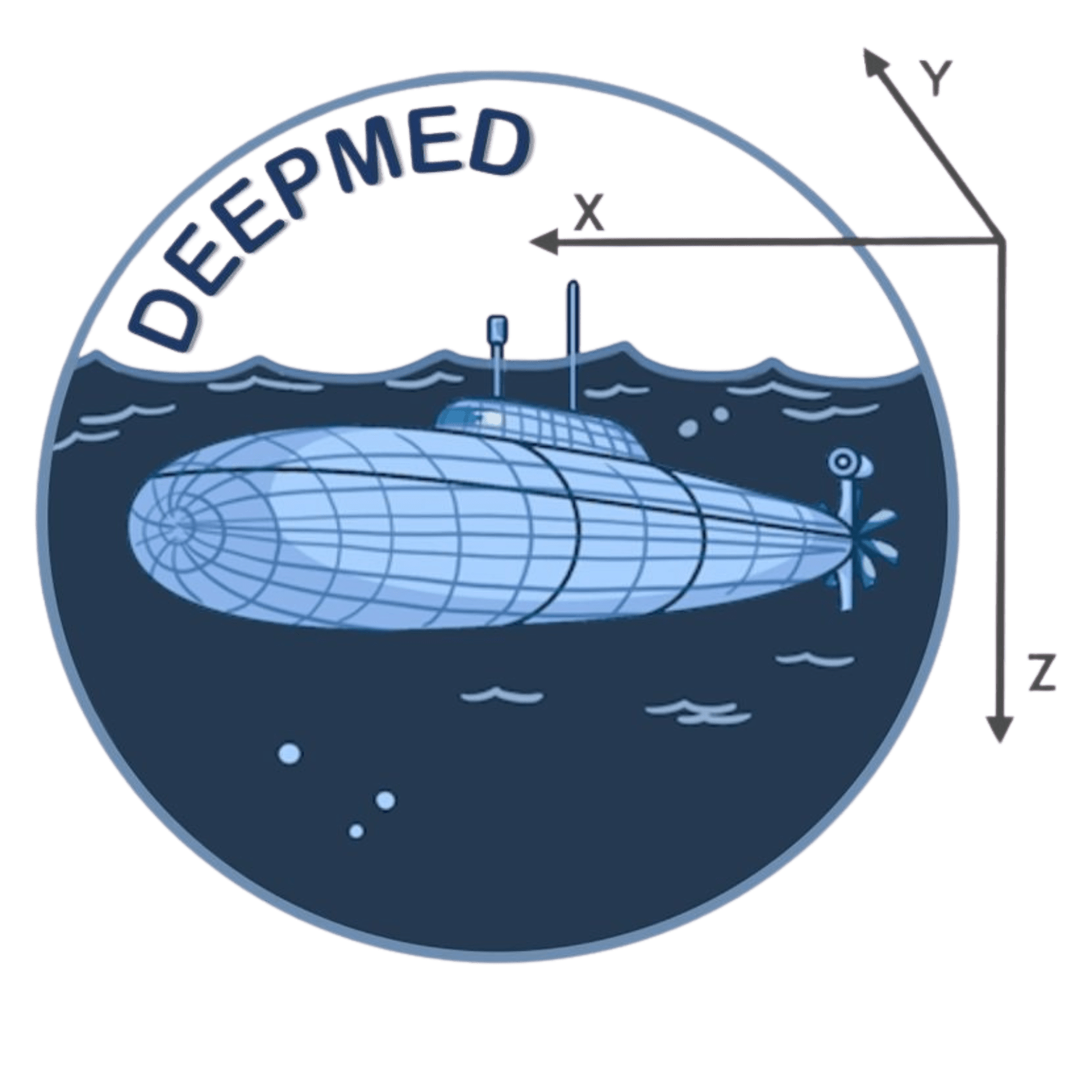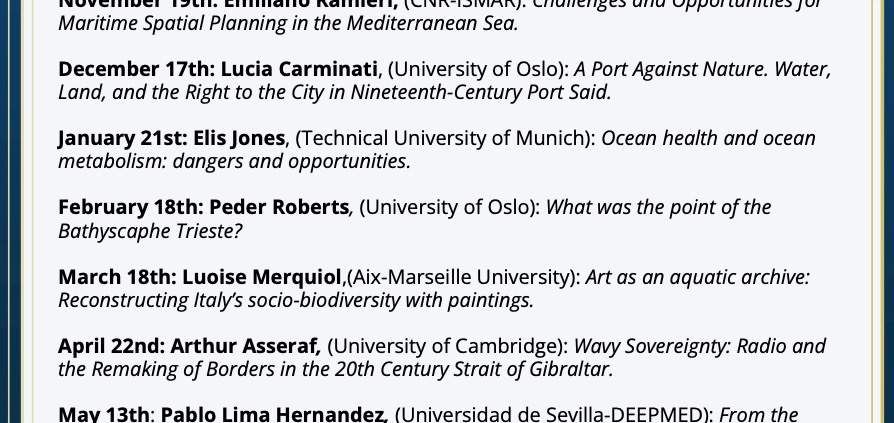Esto es una prueba
4822642 {4822642:XXM6AMU7} 1 apa 50 default 1278 https://grupo.us.es/deepmed/wp-content/plugins/zotpress/
de una Zotero %7B%22status%22%3A%22success%22%2C%22updateneeded%22%3Afalse%2C%22instance%22%3Afalse%2C%22meta%22%3A%7B%22request_last%22%3A0%2C%22request_next%22%3A0%2C%22used_cache%22%3Atrue%7D%2C%22data%22%3A%5B%7B%22key%22%3A%22XXM6AMU7%22%2C%22library%22%3A%7B%22id%22%3A4822642%7D%2C%22meta%22%3A%7B%22creatorSummary%22%3A%22Naranjo%20Ram%5Cu00edrez%20et%20al.%22%2C%22parsedDate%22%3A%222016%22%2C%22numChildren%22%3A3%7D%2C%22bib%22%3A%22%3Cdiv%20class%3D%5C%22csl-bib-body%5C%22%20style%3D%5C%22line-height%3A%202%3B%20padding-left%3A%201em%3B%20text-indent%3A-1em%3B%5C%22%3E%5Cn%20%20%3Cdiv%20class%3D%5C%22csl-entry%5C%22%3ENaranjo%20Ram%26%23xED%3Brez%2C%20J.%2C%20Torres%20M%26%23xE1%3Brquez%2C%20M.%2C%20Vega%20Pozuelo%2C%20R.%20F.%2C%20%26amp%3B%20Morales%20Gil%2C%20A.%20%282016%29.%20La%20desecaci%26%23xF3%3Bn%20hist%26%23xF3%3Brica%20de%20los%20humedales%20del%20medio%20Guadalquivir%3A%20Relaciones%20ecoculturales%2C%20econ%26%23xF3%3Bmicas%20y%20sanitarias.%20In%20J.%20F.%20Vera%20Rebollo%2C%20J.%20Olcina%20Cantos%2C%20%26amp%3B%20M.%20Hern%26%23xE1%3Bndez%20Hern%26%23xE1%3Bndez%20%28Eds.%29%2C%20%3Ci%3EPaisaje%2C%20cultura%20territorial%20y%20vivencia%20de%20la%20geograf%26%23xED%3Ba%3A%20Libro%20homenaje%20al%20profesor%20Alfredo%20Morales%20Gil%3C%5C%2Fi%3E%20%28pp.%20319%26%23x2013%3B342%29.%20San%20Vicente%20del%20Raspeig%20%28Alicante%29%26%23x202F%3B%3A%20Publicaciones%20de%20la%20Universidad%20de%20Alicante%2C%20cop.%202016.%3C%5C%2Fdiv%3E%5Cn%3C%5C%2Fdiv%3E%22%2C%22data%22%3A%7B%22itemType%22%3A%22bookSection%22%2C%22title%22%3A%22La%20desecaci%5Cu00f3n%20hist%5Cu00f3rica%20de%20los%20humedales%20del%20medio%20Guadalquivir%3A%20Relaciones%20ecoculturales%2C%20econ%5Cu00f3micas%20y%20sanitarias%22%2C%22creators%22%3A%5B%7B%22creatorType%22%3A%22author%22%2C%22firstName%22%3A%22Jos%5Cu00e9%22%2C%22lastName%22%3A%22Naranjo%20Ram%5Cu00edrez%22%7D%2C%7B%22creatorType%22%3A%22author%22%2C%22firstName%22%3A%22Mart%5Cu00edn%22%2C%22lastName%22%3A%22Torres%20M%5Cu00e1rquez%22%7D%2C%7B%22creatorType%22%3A%22author%22%2C%22firstName%22%3A%22Rafael%20F.%22%2C%22lastName%22%3A%22Vega%20Pozuelo%22%7D%2C%7B%22creatorType%22%3A%22author%22%2C%22firstName%22%3A%22Alfredo%22%2C%22lastName%22%3A%22Morales%20Gil%22%7D%2C%7B%22creatorType%22%3A%22seriesEditor%22%2C%22firstName%22%3A%22Jos%5Cu00e9%20Fernando%22%2C%22lastName%22%3A%22Vera%20Rebollo%22%7D%2C%7B%22creatorType%22%3A%22seriesEditor%22%2C%22firstName%22%3A%22Jorge%22%2C%22lastName%22%3A%22Olcina%20Cantos%22%7D%2C%7B%22creatorType%22%3A%22seriesEditor%22%2C%22firstName%22%3A%22Mar%5Cu00eda%22%2C%22lastName%22%3A%22Hern%5Cu00e1ndez%20Hern%5Cu00e1ndez%22%7D%5D%2C%22abstractNote%22%3A%22An%20analysis%20of%20the%20historical%20drying%20up%20process%20that%20suffered%20some%20wetlands%20in%20the%20depression%20in%20middle%20stretch%20of%20the%20Guadalquivir%20River%20%28Spain%29%2C%20with%20detailed%20study%20of%20some%20significant%20cases.%20This%20attitude%20contrast%20with%20the%20current%20valuation%20and%20protection%20of%20a%20set%20of%20ponds%20which%20offer%20a%20counterpoint%20of%20great%20ecological%20value%20in%20a%20landscape%20of%20dominant%20agricultural%20activity.%20Landscape%20features%20and%20biodiversity%20that%20exist%20in%20these%20wetlands%20have%20been%20the%20reason%20for%20the%20transformation%20of%20the%20agrarian%20landscape%20in%20a%20in%20a%20prominent%20and%20singular%20set%20for%20its%20natural%20heritage.%20One%20of%20the%20objectives%20of%20our%20study%20is%20to%20reveal%20the%20circumstances%20and%20vicissitudes%20that%20occurred%20in%20this%20process.%20To%20do%20this%20we%20discovered%20two%20original%20terms%20of%20this%20research%3A%20%5Cu00ablamafobia%5Cu00bb%20o%20%5Cu00abelosfobia%5Cu00bb%2C%20that%20realized%20the%20obsession%20with%20the%20drying%20up%20of%20this%20places%20for%20centuries.%5CnAn%5Cu00e1lisis%20de%20los%20procesos%20de%20desecaci%5Cu00f3n%20hist%5Cu00f3rica%20que%20han%20sufrido%20algunos%20humedales%20de%20la%20zona%20que%2C%20en%20la%20Depresi%5Cu00f3n%20del%20Guadalquivir%2C%20comprende%20el%20tramo%20medio%20de%20dicho%20r%5Cu00edo%2C%20con%20estudio%20detallado%20de%20algunos%20casos%20significativos.%20Contrasta%20esta%20actitud%20desecadora%20con%20la%20posterior%20valoraci%5Cu00f3n%20y%20protecci%5Cu00f3n%20de%20un%20conjunto%20de%20lagunas%20que%20ofrecen%20un%20contrapunto%20de%20gran%20valor%20ecol%5Cu00f3gico%20en%20un%20paisaje%20de%20actividad%20agraria%20dominante.%20Las%20singularidades%20paisaj%5Cu00edsticas%20y%20la%20biodiversidad%20que%20albergan%20estos%20humedales%20han%20sido%20la%20base%20para%20la%20transformaci%5Cu00f3n%20de%20aquel%20paisaje%20agrario%20en%20un%20conjunto%20destacado%20y%20singular%20por%20su%20patrimonio%20natural.%20Desvelar%20las%20circunstancias%20y%20avatares%20acaecidos%20en%20este%20proceso%20ser%5Cu00e1%20el%20objetivo%20de%20nuestro%20estudio.%20Para%20ello%20se%20acu%5Cu00f1an%20dos%20t%5Cu00e9rminos%20originales%20de%20esta%20investigaci%5Cu00f3n%3A%20%5Cu00ablamafobia%5Cu00bb%20o%20%5Cu00abelosfobia%5Cu00bb%2C%20que%20tratar%5Cu00e1n%20de%20concretar%20esta%20obsesi%5Cu00f3n%20desecadora%20presente%20en%20estos%20lugares%20a%20lo%20largo%20de%20siglos.%22%2C%22bookTitle%22%3A%22Paisaje%2C%20cultura%20territorial%20y%20vivencia%20de%20la%20geograf%5Cu00eda%3A%20Libro%20homenaje%20al%20profesor%20Alfredo%20Morales%20Gil%22%2C%22date%22%3A%222016%22%2C%22language%22%3A%22%22%2C%22ISBN%22%3A%22978-84-16724-03-1%22%2C%22url%22%3A%22%22%2C%22collections%22%3A%5B%5D%2C%22dateModified%22%3A%222023-10-09T09%3A10%3A49Z%22%7D%7D%5D%7D
Naranjo Ramírez, J., Torres Márquez, M., Vega Pozuelo, R. F., & Morales Gil, A. (2016). La desecación histórica de los humedales del medio Guadalquivir: Relaciones ecoculturales, económicas y sanitarias. In J. F. Vera Rebollo, J. Olcina Cantos, & M. Hernández Hernández (Eds.), Paisaje, cultura territorial y vivencia de la geografía: Libro homenaje al profesor Alfredo Morales Gil (pp. 319–342). San Vicente del Raspeig (Alicante) : Publicaciones de la Universidad de Alicante, cop. 2016.
Esta es una segunda prueba de Zotero
Y la tercera prueba
{4822642:B2LJBTDG} apa default asc 0 1278
%7B%22status%22%3A%22success%22%2C%22updateneeded%22%3Afalse%2C%22instance%22%3Afalse%2C%22meta%22%3A%7B%22request_last%22%3A1350%2C%22request_next%22%3A50%2C%22used_cache%22%3Atrue%7D%2C%22data%22%3A%5B%7B%22key%22%3A%22E9IVPRH7%22%2C%22library%22%3A%7B%22id%22%3A4822642%7D%2C%22meta%22%3A%7B%22lastModifiedByUser%22%3A%7B%22id%22%3A13025568%2C%22username%22%3A%22jipvbesouw%22%2C%22name%22%3A%22%22%2C%22links%22%3A%7B%22alternate%22%3A%7B%22href%22%3A%22https%3A%5C%2F%5C%2Fwww.zotero.org%5C%2Fjipvbesouw%22%2C%22type%22%3A%22text%5C%2Fhtml%22%7D%7D%7D%2C%22creatorSummary%22%3A%22Mills%22%2C%22parsedDate%22%3A%222011%22%2C%22numChildren%22%3A1%7D%2C%22bib%22%3A%22%3Cdiv%20class%3D%5C%22csl-bib-body%5C%22%20style%3D%5C%22line-height%3A%202%3B%20padding-left%3A%201em%3B%20text-indent%3A-1em%3B%5C%22%3E%5Cn%20%20%3Cdiv%20class%3D%5C%22csl-entry%5C%22%3EMills%2C%20E.%20L.%20%282011%29.%20%3Ci%3EThe%20Fluid%20Envelope%20of%20Our%20Planet%3A%20How%20the%20Study%20of%20Ocean%20Currents%20Became%20a%20Science%3C%5C%2Fi%3E.%20%3Ca%20class%3D%27zp-ItemURL%27%20href%3D%27http%3A%5C%2F%5C%2Fsearch.ebscohost.com%5C%2Flogin.aspx%3Fdirect%3Dtrue%26scope%3Dsite%26db%3Dnlebk%26db%3Dnlabk%26AN%3D682761%27%3Ehttp%3A%5C%2F%5C%2Fsearch.ebscohost.com%5C%2Flogin.aspx%3Fdirect%3Dtrue%26scope%3Dsite%26db%3Dnlebk%26db%3Dnlabk%26AN%3D682761%3C%5C%2Fa%3E%3C%5C%2Fdiv%3E%5Cn%3C%5C%2Fdiv%3E%22%2C%22data%22%3A%7B%22itemType%22%3A%22book%22%2C%22title%22%3A%22The%20Fluid%20Envelope%20of%20Our%20Planet%3A%20How%20the%20Study%20of%20Ocean%20Currents%20Became%20a%20Science%22%2C%22creators%22%3A%5B%7B%22creatorType%22%3A%22author%22%2C%22firstName%22%3A%22Eric%20L%22%2C%22lastName%22%3A%22Mills%22%7D%5D%2C%22abstractNote%22%3A%22%22%2C%22date%22%3A%222011%22%2C%22language%22%3A%22English%22%2C%22ISBN%22%3A%22978-1-4426-6360-2%201-4426-6360-X%22%2C%22url%22%3A%22http%3A%5C%2F%5C%2Fsearch.ebscohost.com%5C%2Flogin.aspx%3Fdirect%3Dtrue%26scope%3Dsite%26db%3Dnlebk%26db%3Dnlabk%26AN%3D682761%22%2C%22collections%22%3A%5B%22TEXA98P8%22%5D%2C%22dateModified%22%3A%222024-08-13T12%3A50%3A17Z%22%7D%7D%2C%7B%22key%22%3A%22IE6KIEUE%22%2C%22library%22%3A%7B%22id%22%3A4822642%7D%2C%22meta%22%3A%7B%22creatorSummary%22%3A%22Bergamasco%20and%20Malanotte-Rizzoli%22%2C%22parsedDate%22%3A%222010%22%2C%22numChildren%22%3A0%7D%2C%22bib%22%3A%22%3Cdiv%20class%3D%5C%22csl-bib-body%5C%22%20style%3D%5C%22line-height%3A%202%3B%20padding-left%3A%201em%3B%20text-indent%3A-1em%3B%5C%22%3E%5Cn%20%20%3Cdiv%20class%3D%5C%22csl-entry%5C%22%3EBergamasco%2C%20A.%2C%20%26amp%3B%20Malanotte-Rizzoli%2C%20P.%20%282010%29.%20The%20circulation%20of%20the%20Mediterranean%20Sea%3A%20a%20historical%20review%20of%20experimental%20investigations.%20%3Ci%3EAdvances%20in%20Oceanography%20and%20Limnology%3C%5C%2Fi%3E%2C%20%3Ci%3E1%3C%5C%2Fi%3E%281%29%2C%2011%26%23x2013%3B28.%20%3Ca%20class%3D%27zp-DOIURL%27%20href%3D%27https%3A%5C%2F%5C%2Fdoi.org%5C%2F10.1080%5C%2F19475721.2010.491656%27%3Ehttps%3A%5C%2F%5C%2Fdoi.org%5C%2F10.1080%5C%2F19475721.2010.491656%3C%5C%2Fa%3E%3C%5C%2Fdiv%3E%5Cn%3C%5C%2Fdiv%3E%22%2C%22data%22%3A%7B%22itemType%22%3A%22journalArticle%22%2C%22title%22%3A%22The%20circulation%20of%20the%20Mediterranean%20Sea%3A%20a%20historical%20review%20of%20experimental%20investigations%22%2C%22creators%22%3A%5B%7B%22creatorType%22%3A%22author%22%2C%22firstName%22%3A%22A.%22%2C%22lastName%22%3A%22Bergamasco%22%7D%2C%7B%22creatorType%22%3A%22author%22%2C%22firstName%22%3A%22P.%22%2C%22lastName%22%3A%22Malanotte-Rizzoli%22%7D%5D%2C%22abstractNote%22%3A%22%22%2C%22date%22%3A%2206%5C%2F2010%22%2C%22language%22%3A%22en%22%2C%22DOI%22%3A%2210.1080%5C%2F19475721.2010.491656%22%2C%22ISSN%22%3A%221947-5721%2C%201947-573X%22%2C%22url%22%3A%22http%3A%5C%2F%5C%2Fwww.tandfonline.com%5C%2Fdoi%5C%2Fabs%5C%2F10.1080%5C%2F19475721.2010.491656%22%2C%22collections%22%3A%5B%22TEXA98P8%22%5D%2C%22dateModified%22%3A%222024-04-01T13%3A10%3A49Z%22%7D%7D%2C%7B%22key%22%3A%2223VREYEI%22%2C%22library%22%3A%7B%22id%22%3A4822642%7D%2C%22meta%22%3A%7B%22creatorSummary%22%3A%22O%27Gorman%20et%20al.%22%2C%22parsedDate%22%3A%222024%22%2C%22numChildren%22%3A1%7D%2C%22bib%22%3A%22%3Cdiv%20class%3D%5C%22csl-bib-body%5C%22%20style%3D%5C%22line-height%3A%202%3B%20padding-left%3A%201em%3B%20text-indent%3A-1em%3B%5C%22%3E%5Cn%20%20%3Cdiv%20class%3D%5C%22csl-entry%5C%22%3EO%26%23x2019%3BGorman%2C%20E.%2C%20San%20Mart%26%23xED%3Bn%2C%20W.%2C%20Carey%2C%20M.%2C%20%26amp%3B%20Swart%2C%20S.%20%28Eds.%29.%20%282024%29.%20%3Ci%3EThe%20Routledge%20handbook%20of%20environmental%20history%3C%5C%2Fi%3E.%20Routledge.%3C%5C%2Fdiv%3E%5Cn%3C%5C%2Fdiv%3E%22%2C%22data%22%3A%7B%22itemType%22%3A%22book%22%2C%22title%22%3A%22The%20Routledge%20handbook%20of%20environmental%20history%22%2C%22creators%22%3A%5B%7B%22creatorType%22%3A%22editor%22%2C%22firstName%22%3A%22Emily%22%2C%22lastName%22%3A%22O%27Gorman%22%7D%2C%7B%22creatorType%22%3A%22editor%22%2C%22firstName%22%3A%22William%22%2C%22lastName%22%3A%22San%20Mart%5Cu00edn%22%7D%2C%7B%22creatorType%22%3A%22editor%22%2C%22firstName%22%3A%22Mark%22%2C%22lastName%22%3A%22Carey%22%7D%2C%7B%22creatorType%22%3A%22editor%22%2C%22firstName%22%3A%22Sandra%22%2C%22lastName%22%3A%22Swart%22%7D%5D%2C%22abstractNote%22%3A%22%5C%22The%20Routledge%20Handbook%20of%20Environmental%20History%20presents%20a%20cutting-edge%20overview%20of%20the%20dynamic%20and%20ever-expanding%20field%20of%20environmental%20history.%20It%20addresses%20recent%20transformations%20in%20the%20field%20and%20responses%20to%20shifting%20scholarly%2C%20political%2C%20and%20environmental%20landscapes.%20The%20handbook%20fully%20and%20critically%20engages%20with%20recent%20exciting%20changes%2C%20contextualizes%20them%20within%20longer-term%20shifts%20in%20the%20field%2C%20and%20charts%20potential%20new%20directions%20for%20study.%20It%20focuses%20on%20five%20key%20areas%3A%20Theories%20and%20concepts%20related%20to%20changing%20considerations%20of%20social%20justice%2C%20including%20postcolonial%2C%20antiracist%2C%20and%20feminist%20approaches%2C%20and%20the%20field%27s%20growing%20emphasis%20on%20multiple%20human%20voices%20and%20agencies.%20The%20roles%20of%20non-humans%20and%20the%20more-than-human%20in%20the%20telling%20of%20environmental%20histories%2C%20from%20animals%20and%20plants%20to%20insects%20as%20vectors%20of%20disease%20and%20the%20influences%20of%20water%20and%20ice%2C%20the%20changing%20theoretical%20approaches%20and%20the%20influence%20of%20concepts%20in%20related%20areas%20such%20as%20animal%20and%20discard%20studies.%20How%20changes%20in%20theories%20and%20concepts%20are%20shaping%20methods%20in%20environmental%20history%20and%20shifting%20approaches%20to%20traditional%20sources%20like%20archives%20and%20oral%20histories%20as%20well%20as%20experiments%20by%20practitioners%20with%20new%20methods%20and%20sources.%20Responses%20to%20a%20range%20of%20current%20complex%20problems%2C%20such%20as%20climate%20change%2C%20and%20how%20environmental%20historians%20can%20best%20help%20mitigate%20and%20resolve%20these%20problems.%20Diverse%20ways%20in%20which%20environmental%20historians%20disseminate%20their%20research%20within%20and%20beyond%20academia%2C%20including%20new%20modes%20of%20research%20dissemination%2C%20teaching%2C%20and%20engagements%20with%20stakeholders%20and%20the%20policy%20arena.%20This%20is%20an%20important%20resource%20for%20environmental%20historians%2C%20researchers%20and%20students%20in%20the%20related%20fields%20of%20political%20ecology%2C%20environmental%20studies%2C%20natural%20resources%20management%20and%20environmental%20planning%5C%22--%22%2C%22date%22%3A%222024%22%2C%22language%22%3A%22en%22%2C%22ISBN%22%3A%22978-1-03-200359-7%20978-1-03-203842-1%22%2C%22url%22%3A%22%22%2C%22collections%22%3A%5B%22D6MWN8E4%22%5D%2C%22dateModified%22%3A%222024-02-21T14%3A57%3A38Z%22%7D%7D%2C%7B%22key%22%3A%22Y5DTSS48%22%2C%22library%22%3A%7B%22id%22%3A4822642%7D%2C%22meta%22%3A%7B%22creatorSummary%22%3A%22Galka%22%2C%22parsedDate%22%3A%222023-11-01%22%2C%22numChildren%22%3A2%7D%2C%22bib%22%3A%22%3Cdiv%20class%3D%5C%22csl-bib-body%5C%22%20style%3D%5C%22line-height%3A%202%3B%20padding-left%3A%201em%3B%20text-indent%3A-1em%3B%5C%22%3E%5Cn%20%20%3Cdiv%20class%3D%5C%22csl-entry%5C%22%3EGalka%2C%20J.%20%282023%29.%20Oceans%20of%20Ooze%3A%20Deep-Sea%20Sedimentary%20Data%2C%20Mineral%20Resource%20Frontiers%2C%20and%20Imperial%20Continuities%20in%20Ocean%20History.%20%3Ci%3EHistorical%20Studies%20in%20the%20Natural%20Sciences%3C%5C%2Fi%3E%2C%20%3Ci%3E53%3C%5C%2Fi%3E%285%29%2C%20481%26%23x2013%3B517.%20%3Ca%20class%3D%27zp-ItemURL%27%20href%3D%27https%3A%5C%2F%5C%2Fdoi.org%5C%2F10.1525%5C%2Fhsns.2023.53.5.481%27%3Ehttps%3A%5C%2F%5C%2Fdoi.org%5C%2F10.1525%5C%2Fhsns.2023.53.5.481%3C%5C%2Fa%3E%3C%5C%2Fdiv%3E%5Cn%3C%5C%2Fdiv%3E%22%2C%22data%22%3A%7B%22itemType%22%3A%22journalArticle%22%2C%22title%22%3A%22Oceans%20of%20Ooze%3A%20Deep-Sea%20Sedimentary%20Data%2C%20Mineral%20Resource%20Frontiers%2C%20and%20Imperial%20Continuities%20in%20Ocean%20History%22%2C%22creators%22%3A%5B%7B%22creatorType%22%3A%22author%22%2C%22firstName%22%3A%22Jonathan%22%2C%22lastName%22%3A%22Galka%22%7D%5D%2C%22abstractNote%22%3A%22Historians%20of%20science%20increasingly%20turn%20to%20ocean%20spaces%2C%20especially%20from%20the%20mid%5Cu2013twentieth%20century%2C%20when%20oceanography%20adopted%20new%20strategic%20and%20economic%20significance%20during%20and%20after%20World%20War%20II.%20Yet%2C%20the%20overdetermination%20of%20oceanography%5Cu2019s%20historiography%20by%20histories%20of%20conflict%20obscures%20the%20role%20that%20empire%5Cu2014its%20continuities%20and%20its%20ends%5Cu2014played%20in%20the%20transformation%20of%20ocean%20science%20and%20politics%20at%20the%20same%20time.%20This%20essay%20builds%20on%20recent%20work%20seeking%20to%20recover%20the%20role%20of%20empire%5Cu2019s%20endurance%20and%20its%20long%20shadows%20in%20the%20construction%20of%20mid-twentieth-century%20ocean%20science%2C%20politics%2C%20and%20law.%20Focusing%20on%20deep-sea%20sediments%2C%20I%20parse%20the%20work%20of%20H.M.S.%20Challenger%20%281872%5Cu20131876%29%20naturalist-cum-Challenger%20Office%20director%20John%20Murray%20alongside%20that%20of%20American%20economic%20geologist%20John%20Mero%2C%20who%20in%20the%20mid%5Cu2013twentieth%20century%20articulated%20all%20seabeds%20as%20storehouses%20of%20vast%20mineral%20wealth.%20Murray%5Cu2019s%20sedimentological%20taxonomies%20and%20representations%20as%20well%20as%20his%20collected%20data%20on%20global%20oozes%2C%20nodules%20included%2C%20formed%20much%20of%20the%20basis%20for%20Mero%5Cu2019s%20work.%20And%2C%20both%20Murray%20and%20Mero%20leveraged%20sediments%20to%20argue%20for%20proprietary%20positions%20premised%20on%20priority-in-time%20for%20resource%20discovery%20claims%2C%20and%20exclusive%20access%20based%20upon%20scientific%20knowledge%20and%20technical%20ability%2C%20both%20masked%20by%20tropes%20of%20equal%20access%20and%20opportunity.%20These%20data%20and%20practices%20helped%20Northern%20scientists%20build%20and%20maintain%20control%20over%20knowledge%20of%20the%20seabed%20and%20the%20value%20of%20its%20resources%2C%20as%20postcolonial%20and%20Cold%20War%20impetuses%20rearranged%20political%20and%20economic%20order%20at%20sea.%20Historicizing%20abyssal%20oozes%20illuminates%20the%20character%20of%20contemporary%20conflicts%20over%20the%20future%20of%20the%20international%20seabed%2C%20asking%2C%20who%20determines%20how%20the%20seabed%20will%20be%20valued%3F%22%2C%22date%22%3A%222023-11-01%22%2C%22language%22%3A%22%22%2C%22DOI%22%3A%2210.1525%5C%2Fhsns.2023.53.5.481%22%2C%22ISSN%22%3A%221939-1811%22%2C%22url%22%3A%22https%3A%5C%2F%5C%2Fdoi.org%5C%2F10.1525%5C%2Fhsns.2023.53.5.481%22%2C%22collections%22%3A%5B%22TEXA98P8%22%5D%2C%22dateModified%22%3A%222023-12-19T12%3A49%3A03Z%22%7D%7D%2C%7B%22key%22%3A%22C5956ZSV%22%2C%22library%22%3A%7B%22id%22%3A4822642%7D%2C%22meta%22%3A%7B%22creatorSummary%22%3A%22Curry%22%2C%22numChildren%22%3A1%7D%2C%22bib%22%3A%22%3Cdiv%20class%3D%5C%22csl-bib-body%5C%22%20style%3D%5C%22line-height%3A%202%3B%20padding-left%3A%201em%3B%20text-indent%3A-1em%3B%5C%22%3E%5Cn%20%20%3Cdiv%20class%3D%5C%22csl-entry%5C%22%3ECurry%2C%20A.%20%28n.d.%29.%20%3Ci%3EAdrian%20Currie%20-%20Rock%2C%20Bone%2C%20and%20Ruin%20-%20An%20Optimist%26%23x2019%3Bs%20Guide%20to%20the%20Historical%20Sciences-MIT%20Press%20%282018%29%3C%5C%2Fi%3E.%3C%5C%2Fdiv%3E%5Cn%3C%5C%2Fdiv%3E%22%2C%22data%22%3A%7B%22itemType%22%3A%22journalArticle%22%2C%22title%22%3A%22Adrian%20Currie%20-%20Rock%2C%20Bone%2C%20and%20Ruin%20-%20An%20Optimist%27s%20Guide%20to%20the%20Historical%20Sciences-MIT%20Press%20%282018%29%22%2C%22creators%22%3A%5B%7B%22creatorType%22%3A%22author%22%2C%22firstName%22%3A%22Adrian%22%2C%22lastName%22%3A%22Curry%22%7D%5D%2C%22abstractNote%22%3A%22%22%2C%22date%22%3A%22%22%2C%22language%22%3A%22en%22%2C%22DOI%22%3A%22%22%2C%22ISSN%22%3A%22%22%2C%22url%22%3A%22%22%2C%22collections%22%3A%5B%22DVC3KK74%22%5D%2C%22dateModified%22%3A%222023-12-15T16%3A49%3A48Z%22%7D%7D%2C%7B%22key%22%3A%22JWIKEKTY%22%2C%22library%22%3A%7B%22id%22%3A4822642%7D%2C%22meta%22%3A%7B%22creatorSummary%22%3A%22Imbert%22%2C%22parsedDate%22%3A%222017%22%2C%22numChildren%22%3A0%7D%2C%22bib%22%3A%22%3Cdiv%20class%3D%5C%22csl-bib-body%5C%22%20style%3D%5C%22line-height%3A%202%3B%20padding-left%3A%201em%3B%20text-indent%3A-1em%3B%5C%22%3E%5Cn%20%20%3Cdiv%20class%3D%5C%22csl-entry%5C%22%3EImbert%2C%20C.%20%282017%29.%20Computer%20Simulations%20and%20Computational%20Models%20in%20Science.%20In%20L.%20Magnani%20%26amp%3B%20T.%20Bertolotti%20%28Eds.%29%2C%20%3Ci%3ESpringer%20Handbook%20of%20Model-Based%20Science%3C%5C%2Fi%3E%20%28pp.%20735%26%23x2013%3B781%29.%20Springer%20International%20Publishing.%20https%3A%5C%2F%5C%2Fdoi.org%5C%2F10.1007%5C%2F978-3-319-30526-4_34%3C%5C%2Fdiv%3E%5Cn%3C%5C%2Fdiv%3E%22%2C%22data%22%3A%7B%22itemType%22%3A%22bookSection%22%2C%22title%22%3A%22Computer%20Simulations%20and%20Computational%20Models%20in%20Science%22%2C%22creators%22%3A%5B%7B%22creatorType%22%3A%22editor%22%2C%22firstName%22%3A%22Lorenzo%22%2C%22lastName%22%3A%22Magnani%22%7D%2C%7B%22creatorType%22%3A%22editor%22%2C%22firstName%22%3A%22Tommaso%22%2C%22lastName%22%3A%22Bertolotti%22%7D%2C%7B%22creatorType%22%3A%22author%22%2C%22firstName%22%3A%22Cyrille%22%2C%22lastName%22%3A%22Imbert%22%7D%5D%2C%22abstractNote%22%3A%22%22%2C%22bookTitle%22%3A%22Springer%20Handbook%20of%20Model-Based%20Science%22%2C%22date%22%3A%222017%22%2C%22language%22%3A%22en%22%2C%22ISBN%22%3A%22978-3-319-30525-7%20978-3-319-30526-4%22%2C%22url%22%3A%22http%3A%5C%2F%5C%2Flink.springer.com%5C%2F10.1007%5C%2F978-3-319-30526-4_34%22%2C%22collections%22%3A%5B%5D%2C%22dateModified%22%3A%222023-12-15T10%3A38%3A32Z%22%7D%7D%2C%7B%22key%22%3A%22KS5TCVEB%22%2C%22library%22%3A%7B%22id%22%3A4822642%7D%2C%22meta%22%3A%7B%22creatorSummary%22%3A%22Bailer-Jones%22%2C%22parsedDate%22%3A%222009%22%2C%22numChildren%22%3A1%7D%2C%22bib%22%3A%22%3Cdiv%20class%3D%5C%22csl-bib-body%5C%22%20style%3D%5C%22line-height%3A%202%3B%20padding-left%3A%201em%3B%20text-indent%3A-1em%3B%5C%22%3E%5Cn%20%20%3Cdiv%20class%3D%5C%22csl-entry%5C%22%3EBailer-Jones%2C%20D.%20%282009%29.%20%3Ci%3EScientific%20models%20in%20philosophy%20of%20science%3C%5C%2Fi%3E.%20University%20of%20Pittsburgh%20Press.%3C%5C%2Fdiv%3E%5Cn%3C%5C%2Fdiv%3E%22%2C%22data%22%3A%7B%22itemType%22%3A%22book%22%2C%22title%22%3A%22Scientific%20models%20in%20philosophy%20of%20science%22%2C%22creators%22%3A%5B%7B%22creatorType%22%3A%22author%22%2C%22firstName%22%3A%22Daniela%22%2C%22lastName%22%3A%22Bailer-Jones%22%7D%5D%2C%22abstractNote%22%3A%22%22%2C%22date%22%3A%222009%22%2C%22language%22%3A%22en%22%2C%22ISBN%22%3A%22978-0-8229-4376-1%22%2C%22url%22%3A%22%22%2C%22collections%22%3A%5B%5D%2C%22dateModified%22%3A%222023-12-15T10%3A38%3A32Z%22%7D%7D%2C%7B%22key%22%3A%22L57WNSIY%22%2C%22library%22%3A%7B%22id%22%3A4822642%7D%2C%22meta%22%3A%7B%22creatorSummary%22%3A%22Bokulich%22%2C%22parsedDate%22%3A%222017%22%2C%22numChildren%22%3A0%7D%2C%22bib%22%3A%22%3Cdiv%20class%3D%5C%22csl-bib-body%5C%22%20style%3D%5C%22line-height%3A%202%3B%20padding-left%3A%201em%3B%20text-indent%3A-1em%3B%5C%22%3E%5Cn%20%20%3Cdiv%20class%3D%5C%22csl-entry%5C%22%3EBokulich%2C%20A.%20%282017%29.%20Models%20and%20Explanation.%20In%20L.%20Magnani%20%26amp%3B%20T.%20Bertolotti%20%28Eds.%29%2C%20%3Ci%3ESpringer%20Handbook%20of%20Model-Based%20Science%3C%5C%2Fi%3E%20%28pp.%20103%26%23x2013%3B118%29.%20Springer%20International%20Publishing.%20https%3A%5C%2F%5C%2Fdoi.org%5C%2F10.1007%5C%2F978-3-319-30526-4_4%3C%5C%2Fdiv%3E%5Cn%3C%5C%2Fdiv%3E%22%2C%22data%22%3A%7B%22itemType%22%3A%22bookSection%22%2C%22title%22%3A%22Models%20and%20Explanation%22%2C%22creators%22%3A%5B%7B%22creatorType%22%3A%22editor%22%2C%22firstName%22%3A%22Lorenzo%22%2C%22lastName%22%3A%22Magnani%22%7D%2C%7B%22creatorType%22%3A%22editor%22%2C%22firstName%22%3A%22Tommaso%22%2C%22lastName%22%3A%22Bertolotti%22%7D%2C%7B%22creatorType%22%3A%22author%22%2C%22firstName%22%3A%22Alisa%22%2C%22lastName%22%3A%22Bokulich%22%7D%5D%2C%22abstractNote%22%3A%22%22%2C%22bookTitle%22%3A%22Springer%20Handbook%20of%20Model-Based%20Science%22%2C%22date%22%3A%222017%22%2C%22language%22%3A%22en%22%2C%22ISBN%22%3A%22978-3-319-30525-7%20978-3-319-30526-4%22%2C%22url%22%3A%22http%3A%5C%2F%5C%2Flink.springer.com%5C%2F10.1007%5C%2F978-3-319-30526-4_4%22%2C%22collections%22%3A%5B%5D%2C%22dateModified%22%3A%222023-12-15T10%3A38%3A32Z%22%7D%7D%2C%7B%22key%22%3A%229Z2N6XC5%22%2C%22library%22%3A%7B%22id%22%3A4822642%7D%2C%22meta%22%3A%7B%22creatorSummary%22%3A%22Star%22%2C%22parsedDate%22%3A%222002%22%2C%22numChildren%22%3A1%7D%2C%22bib%22%3A%22%3Cdiv%20class%3D%5C%22csl-bib-body%5C%22%20style%3D%5C%22line-height%3A%202%3B%20padding-left%3A%201em%3B%20text-indent%3A-1em%3B%5C%22%3E%5Cn%20%20%3Cdiv%20class%3D%5C%22csl-entry%5C%22%3EStar%2C%20S.%20L.%20%282002%29.%20%3Ci%3EInfrastructure%20and%20ethnographic%20practice%3A%20Working%20on%20the%20fringes%3C%5C%2Fi%3E.%20%3Ci%3E14%3C%5C%2Fi%3E.%3C%5C%2Fdiv%3E%5Cn%3C%5C%2Fdiv%3E%22%2C%22data%22%3A%7B%22itemType%22%3A%22journalArticle%22%2C%22title%22%3A%22Infrastructure%20and%20ethnographic%20practice%3A%20Working%20on%20the%20fringes%22%2C%22creators%22%3A%5B%7B%22creatorType%22%3A%22author%22%2C%22firstName%22%3A%22Susan%20Leigh%22%2C%22lastName%22%3A%22Star%22%7D%5D%2C%22abstractNote%22%3A%22By%20bringing%20together%20science%20studies%2C%20information%20science%20and%20ethnographic%20fieldwork%20in%20interdisciplinary%20research%20the%20author%20argues%20for%20the%20relevance%20of%20ethnographic%20practices%20when%20studying%20information%20systems%20as%20infrastructures%20of%20communication.%20Ethnographic%20fieldwork%20focuses%20attention%20on%20fringes%20and%20materialities%20of%20infrastructures%20and%20renders%20the%20researcher%20able%20to%20read%20the%20invisible%20layers%20of%20control%20and%20access%2C%20to%20understand%20the%20changes%20in%20the%20social%20orderings%20that%20are%20brought%20about%20by%20information%20technology.%20Numerous%20examples%20and%20personal%20accounts%20of%20studies%20of%20infrastructures%20with%20ethnographic%20tools%20show%20how%20paying%20analytical%20attention%20to%20mundane%20aspects%20of%20information%20infrastructures%20helps%20to%20understand%20the%20consequences%20of%20the%20imbrication%20of%20infrastructure%20and%20human%20organization.%22%2C%22date%22%3A%222002%22%2C%22language%22%3A%22en%22%2C%22DOI%22%3A%22%22%2C%22ISSN%22%3A%22%22%2C%22url%22%3A%22%22%2C%22collections%22%3A%5B%22R4M87AIW%22%2C%22EM59R563%22%5D%2C%22dateModified%22%3A%222023-12-14T16%3A57%3A32Z%22%7D%7D%2C%7B%22key%22%3A%22A2E55S68%22%2C%22library%22%3A%7B%22id%22%3A4822642%7D%2C%22meta%22%3A%7B%22numChildren%22%3A0%7D%2C%22bib%22%3A%22%3Cdiv%20class%3D%5C%22csl-bib-body%5C%22%20style%3D%5C%22line-height%3A%202%3B%20padding-left%3A%201em%3B%20text-indent%3A-1em%3B%5C%22%3E%5Cn%20%20%3Cdiv%20class%3D%5C%22csl-entry%5C%22%3E%28N.d.%29.%3C%5C%2Fdiv%3E%5Cn%3C%5C%2Fdiv%3E%22%2C%22data%22%3A%7B%22itemType%22%3A%22book%22%2C%22title%22%3A%22%22%2C%22creators%22%3A%5B%5D%2C%22abstractNote%22%3A%22%22%2C%22date%22%3A%22%22%2C%22language%22%3A%22%22%2C%22ISBN%22%3A%22%22%2C%22url%22%3A%22%22%2C%22collections%22%3A%5B%22TEXA98P8%22%5D%2C%22dateModified%22%3A%222023-12-14T08%3A30%3A07Z%22%7D%7D%2C%7B%22key%22%3A%227WJDX3VN%22%2C%22library%22%3A%7B%22id%22%3A4822642%7D%2C%22meta%22%3A%7B%22numChildren%22%3A0%7D%2C%22bib%22%3A%22%3Cdiv%20class%3D%5C%22csl-bib-body%5C%22%20style%3D%5C%22line-height%3A%202%3B%20padding-left%3A%201em%3B%20text-indent%3A-1em%3B%5C%22%3E%5Cn%20%20%3Cdiv%20class%3D%5C%22csl-entry%5C%22%3E%28N.d.%29.%3C%5C%2Fdiv%3E%5Cn%3C%5C%2Fdiv%3E%22%2C%22data%22%3A%7B%22itemType%22%3A%22journalArticle%22%2C%22title%22%3A%22%22%2C%22creators%22%3A%5B%5D%2C%22abstractNote%22%3A%22%22%2C%22date%22%3A%22%22%2C%22language%22%3A%22%22%2C%22DOI%22%3A%22%22%2C%22ISSN%22%3A%22%22%2C%22url%22%3A%22%22%2C%22collections%22%3A%5B%22TNCKXBUU%22%5D%2C%22dateModified%22%3A%222023-11-29T13%3A25%3A35Z%22%7D%7D%2C%7B%22key%22%3A%22G6XT6P4U%22%2C%22library%22%3A%7B%22id%22%3A4822642%7D%2C%22meta%22%3A%7B%22numChildren%22%3A1%7D%2C%22bib%22%3A%22%3Cdiv%20class%3D%5C%22csl-bib-body%5C%22%20style%3D%5C%22line-height%3A%202%3B%20padding-left%3A%201em%3B%20text-indent%3A-1em%3B%5C%22%3E%5Cn%20%20%3Cdiv%20class%3D%5C%22csl-entry%5C%22%3E%3Ci%3EThe%20Mediterranean%20Targeted%20Project%3A%20A%20new%20insight%20into%20the%20life%20of%20the%20Mediterranean%20Sea%3C%5C%2Fi%3E.%20%28n.d.%29.%20CORDIS%20%7C%20European%20Commission.%20Retrieved%20November%2023%2C%202023%2C%20from%20%3Ca%20class%3D%27zp-ItemURL%27%20href%3D%27https%3A%5C%2F%5C%2Fcordis.europa.eu%5C%2Farticle%5C%2Fid%5C%2F7339-the-mediterranean-targeted-project-a-new-insight-into-the-life-of-the-mediterranean-sea%27%3Ehttps%3A%5C%2F%5C%2Fcordis.europa.eu%5C%2Farticle%5C%2Fid%5C%2F7339-the-mediterranean-targeted-project-a-new-insight-into-the-life-of-the-mediterranean-sea%3C%5C%2Fa%3E%3C%5C%2Fdiv%3E%5Cn%3C%5C%2Fdiv%3E%22%2C%22data%22%3A%7B%22itemType%22%3A%22webpage%22%2C%22title%22%3A%22The%20Mediterranean%20Targeted%20Project%3A%20A%20new%20insight%20into%20the%20life%20of%20the%20Mediterranean%20Sea%22%2C%22creators%22%3A%5B%5D%2C%22abstractNote%22%3A%22The%20Mediterranean%20Targeted%20Project%20%28MTP%29%20is%20a%20large-scale%20research%20project%20financed%20under%20the%20Community%27s%20specific%20RTD%20programme%20in%20the...%22%2C%22date%22%3A%22%22%2C%22url%22%3A%22https%3A%5C%2F%5C%2Fcordis.europa.eu%5C%2Farticle%5C%2Fid%5C%2F7339-the-mediterranean-targeted-project-a-new-insight-into-the-life-of-the-mediterranean-sea%22%2C%22language%22%3A%22en%22%2C%22collections%22%3A%5B%22BDK62V5D%22%5D%2C%22dateModified%22%3A%222023-11-29T12%3A51%3A09Z%22%7D%7D%2C%7B%22key%22%3A%22C2BSBCVE%22%2C%22library%22%3A%7B%22id%22%3A4822642%7D%2C%22meta%22%3A%7B%22creatorSummary%22%3A%22Malanotte-Rizzoli%20and%20Robinson%22%2C%22parsedDate%22%3A%221994%22%2C%22numChildren%22%3A1%7D%2C%22bib%22%3A%22%3Cdiv%20class%3D%5C%22csl-bib-body%5C%22%20style%3D%5C%22line-height%3A%202%3B%20padding-left%3A%201em%3B%20text-indent%3A-1em%3B%5C%22%3E%5Cn%20%20%3Cdiv%20class%3D%5C%22csl-entry%5C%22%3EMalanotte-Rizzoli%2C%20P.%2C%20%26amp%3B%20Robinson%2C%20A.%20R.%20%28Eds.%29.%20%281994%29.%20%3Ci%3EOcean%20Processes%20in%20Climate%20Dynamics%3A%20Global%20and%20Mediterranean%20Examples%3C%5C%2Fi%3E.%20Springer%20Netherlands.%20https%3A%5C%2F%5C%2Fdoi.org%5C%2F10.1007%5C%2F978-94-011-0870-6%3C%5C%2Fdiv%3E%5Cn%3C%5C%2Fdiv%3E%22%2C%22data%22%3A%7B%22itemType%22%3A%22book%22%2C%22title%22%3A%22Ocean%20Processes%20in%20Climate%20Dynamics%3A%20Global%20and%20Mediterranean%20Examples%22%2C%22creators%22%3A%5B%7B%22creatorType%22%3A%22editor%22%2C%22firstName%22%3A%22Paola%22%2C%22lastName%22%3A%22Malanotte-Rizzoli%22%7D%2C%7B%22creatorType%22%3A%22editor%22%2C%22firstName%22%3A%22Allan%20R.%22%2C%22lastName%22%3A%22Robinson%22%7D%5D%2C%22abstractNote%22%3A%22%22%2C%22date%22%3A%221994%22%2C%22language%22%3A%22en%22%2C%22ISBN%22%3A%22978-94-010-4376-2%20978-94-011-0870-6%22%2C%22url%22%3A%22http%3A%5C%2F%5C%2Flink.springer.com%5C%2F10.1007%5C%2F978-94-011-0870-6%22%2C%22collections%22%3A%5B%22BDK62V5D%22%5D%2C%22dateModified%22%3A%222023-11-29T12%3A50%3A00Z%22%7D%7D%2C%7B%22key%22%3A%22BK2V369S%22%2C%22library%22%3A%7B%22id%22%3A4822642%7D%2C%22meta%22%3A%7B%22creatorSummary%22%3A%22Malanotte-Rizzoli%20and%20Eremeev%22%2C%22parsedDate%22%3A%221999%22%2C%22numChildren%22%3A1%7D%2C%22bib%22%3A%22%3Cdiv%20class%3D%5C%22csl-bib-body%5C%22%20style%3D%5C%22line-height%3A%202%3B%20padding-left%3A%201em%3B%20text-indent%3A-1em%3B%5C%22%3E%5Cn%20%20%3Cdiv%20class%3D%5C%22csl-entry%5C%22%3EMalanotte-Rizzoli%2C%20P.%2C%20%26amp%3B%20Eremeev%2C%20V.%20N.%20%28Eds.%29.%20%281999%29.%20%3Ci%3EThe%20Eastern%20Mediterranean%20as%20a%20Laboratory%20Basin%20for%20the%20Assessment%20of%20Contrasting%20Ecosystems%3C%5C%2Fi%3E.%20Springer%20Netherlands.%20https%3A%5C%2F%5C%2Fdoi.org%5C%2F10.1007%5C%2F978-94-011-4796-5%3C%5C%2Fdiv%3E%5Cn%3C%5C%2Fdiv%3E%22%2C%22data%22%3A%7B%22itemType%22%3A%22book%22%2C%22title%22%3A%22The%20Eastern%20Mediterranean%20as%20a%20Laboratory%20Basin%20for%20the%20Assessment%20of%20Contrasting%20Ecosystems%22%2C%22creators%22%3A%5B%7B%22creatorType%22%3A%22editor%22%2C%22firstName%22%3A%22Paola%22%2C%22lastName%22%3A%22Malanotte-Rizzoli%22%7D%2C%7B%22creatorType%22%3A%22editor%22%2C%22firstName%22%3A%22Valery%20N.%22%2C%22lastName%22%3A%22Eremeev%22%7D%5D%2C%22abstractNote%22%3A%22%22%2C%22date%22%3A%221999%22%2C%22language%22%3A%22en%22%2C%22ISBN%22%3A%22978-0-7923-5586-1%20978-94-011-4796-5%22%2C%22url%22%3A%22http%3A%5C%2F%5C%2Flink.springer.com%5C%2F10.1007%5C%2F978-94-011-4796-5%22%2C%22collections%22%3A%5B%22NN6T28RW%22%2C%22BDK62V5D%22%5D%2C%22dateModified%22%3A%222023-11-29T12%3A49%3A26Z%22%7D%7D%2C%7B%22key%22%3A%22JHJ9FVK8%22%2C%22library%22%3A%7B%22id%22%3A4822642%7D%2C%22meta%22%3A%7B%22creatorSummary%22%3A%22La%20Violette%22%2C%22parsedDate%22%3A%221989%22%2C%22numChildren%22%3A1%7D%2C%22bib%22%3A%22%3Cdiv%20class%3D%5C%22csl-bib-body%5C%22%20style%3D%5C%22line-height%3A%202%3B%20padding-left%3A%201em%3B%20text-indent%3A-1em%3B%5C%22%3E%5Cn%20%20%3Cdiv%20class%3D%5C%22csl-entry%5C%22%3ELa%20Violette%2C%20P.%20E.%20%281989%29.%20WMCE%20Western%20Mediterranean%20Circulation%20Experiment%3A%20A%20preliminary%20review%20of%20results.%20%3Ci%3EEos%2C%20Transactions%20American%20Geophysical%20Union%3C%5C%2Fi%3E%2C%20%3Ci%3E70%3C%5C%2Fi%3E%2831%29%2C%20746.%20%3Ca%20class%3D%27zp-DOIURL%27%20href%3D%27https%3A%5C%2F%5C%2Fdoi.org%5C%2F10.1029%5C%2F89EO00233%27%3Ehttps%3A%5C%2F%5C%2Fdoi.org%5C%2F10.1029%5C%2F89EO00233%3C%5C%2Fa%3E%3C%5C%2Fdiv%3E%5Cn%3C%5C%2Fdiv%3E%22%2C%22data%22%3A%7B%22itemType%22%3A%22journalArticle%22%2C%22title%22%3A%22WMCE%20Western%20Mediterranean%20Circulation%20Experiment%3A%20A%20preliminary%20review%20of%20results%22%2C%22creators%22%3A%5B%7B%22creatorType%22%3A%22author%22%2C%22firstName%22%3A%22Paul%20E.%22%2C%22lastName%22%3A%22La%20Violette%22%7D%5D%2C%22abstractNote%22%3A%22%22%2C%22date%22%3A%221989%22%2C%22language%22%3A%22en%22%2C%22DOI%22%3A%2210.1029%5C%2F89EO00233%22%2C%22ISSN%22%3A%220096-3941%22%2C%22url%22%3A%22http%3A%5C%2F%5C%2Fdoi.wiley.com%5C%2F10.1029%5C%2F89EO00233%22%2C%22collections%22%3A%5B%22P2T4DCDS%22%2C%22BDK62V5D%22%2C%22D5WVMW6T%22%5D%2C%22dateModified%22%3A%222023-11-28T15%3A39%3A43Z%22%7D%7D%2C%7B%22key%22%3A%225FPNVPQQ%22%2C%22library%22%3A%7B%22id%22%3A4822642%7D%2C%22meta%22%3A%7B%22creatorSummary%22%3A%22Ga%5Cu010di%5Cu0107%20et%20al.%22%2C%22parsedDate%22%3A%222002%22%2C%22numChildren%22%3A1%7D%2C%22bib%22%3A%22%3Cdiv%20class%3D%5C%22csl-bib-body%5C%22%20style%3D%5C%22line-height%3A%202%3B%20padding-left%3A%201em%3B%20text-indent%3A-1em%3B%5C%22%3E%5Cn%20%20%3Cdiv%20class%3D%5C%22csl-entry%5C%22%3EGa%26%23x10D%3Bi%26%23x107%3B%2C%20M.%2C%20Civitarese%2C%20G.%2C%20Miserocchi%2C%20S.%2C%20Cardin%2C%20V.%2C%20Crise%2C%20A.%2C%20%26amp%3B%20Mauri%2C%20E.%20%282002%29.%20The%20open-ocean%20convection%20in%20the%20Southern%20Adriatic%3A%20a%20controlling%20mechanism%20of%20the%20spring%20phytoplankton%20bloom.%20%3Ci%3EContinental%20Shelf%20Research%3C%5C%2Fi%3E%2C%20%3Ci%3E22%3C%5C%2Fi%3E%2814%29%2C%201897%26%23x2013%3B1908.%20%3Ca%20class%3D%27zp-DOIURL%27%20href%3D%27https%3A%5C%2F%5C%2Fdoi.org%5C%2F10.1016%5C%2FS0278-4343%2802%2900050-X%27%3Ehttps%3A%5C%2F%5C%2Fdoi.org%5C%2F10.1016%5C%2FS0278-4343%2802%2900050-X%3C%5C%2Fa%3E%3C%5C%2Fdiv%3E%5Cn%3C%5C%2Fdiv%3E%22%2C%22data%22%3A%7B%22itemType%22%3A%22journalArticle%22%2C%22title%22%3A%22The%20open-ocean%20convection%20in%20the%20Southern%20Adriatic%3A%20a%20controlling%20mechanism%20of%20the%20spring%20phytoplankton%20bloom%22%2C%22creators%22%3A%5B%7B%22creatorType%22%3A%22author%22%2C%22firstName%22%3A%22M%22%2C%22lastName%22%3A%22Ga%5Cu010di%5Cu0107%22%7D%2C%7B%22creatorType%22%3A%22author%22%2C%22firstName%22%3A%22G%22%2C%22lastName%22%3A%22Civitarese%22%7D%2C%7B%22creatorType%22%3A%22author%22%2C%22firstName%22%3A%22S%22%2C%22lastName%22%3A%22Miserocchi%22%7D%2C%7B%22creatorType%22%3A%22author%22%2C%22firstName%22%3A%22V%22%2C%22lastName%22%3A%22Cardin%22%7D%2C%7B%22creatorType%22%3A%22author%22%2C%22firstName%22%3A%22A%22%2C%22lastName%22%3A%22Crise%22%7D%2C%7B%22creatorType%22%3A%22author%22%2C%22firstName%22%3A%22E%22%2C%22lastName%22%3A%22Mauri%22%7D%5D%2C%22abstractNote%22%3A%22Physical%20and%20chemical%20data%20analysed%20and%20interpreted%20jointly%20with%20the%20remotely%20sensed%20chlorophyll%20a%20concentrations%20and%20sediment%20trap%20records%20show%20that%20the%20spring%20primary%20production%20maximum%20in%20the%20Southern%20Adriatic%20is%20determined%20by%20the%20open-sea%20convection%20and%20the%20formation%20of%20the%20dense%20Adriatic%20water.%20The%20open-sea%20convection%20varies%20strongly%20on%20the%20interannual%20time-scale%20and%2C%20in%20some%20years%2C%20does%20not%20occur%20at%20all%20due%20to%20mild%20winter%20climatic%20conditions.%20In%20those%20years%2C%20the%20spring%20bloom%20and%20the%20export%20production%20are%20highly%20reduced.%20The%20spring%20primary%20production%20maximum%20consists%20of%20several%20intense%20bloom%20episodes%2C%20which%20occur%20in%20the%20centre%20of%20the%20cyclonic%20gyre%20in%20calm%20weather%20periods%20following%20violent%20mixing%20events%20and%20vertical%20injections%20of%20nutrients%20in%20the%20euphotic%20zone.%20r%202002%20Elsevier%20Science%20Ltd.%20All%20rights%20reserved.%22%2C%22date%22%3A%229%5C%2F2002%22%2C%22language%22%3A%22en%22%2C%22DOI%22%3A%2210.1016%5C%2FS0278-4343%2802%2900050-X%22%2C%22ISSN%22%3A%2202784343%22%2C%22url%22%3A%22https%3A%5C%2F%5C%2Flinkinghub.elsevier.com%5C%2Fretrieve%5C%2Fpii%5C%2FS027843430200050X%22%2C%22collections%22%3A%5B%22NN6T28RW%22%2C%22P2T4DCDS%22%5D%2C%22dateModified%22%3A%222023-11-28T15%3A38%3A03Z%22%7D%7D%2C%7B%22key%22%3A%22UAQQGY4I%22%2C%22library%22%3A%7B%22id%22%3A4822642%7D%2C%22meta%22%3A%7B%22creatorSummary%22%3A%22Incarbona%20et%20al.%22%2C%22parsedDate%22%3A%222016-07-14%22%2C%22numChildren%22%3A1%7D%2C%22bib%22%3A%22%3Cdiv%20class%3D%5C%22csl-bib-body%5C%22%20style%3D%5C%22line-height%3A%202%3B%20padding-left%3A%201em%3B%20text-indent%3A-1em%3B%5C%22%3E%5Cn%20%20%3Cdiv%20class%3D%5C%22csl-entry%5C%22%3EIncarbona%2C%20A.%2C%20Martrat%2C%20B.%2C%20Mortyn%2C%20P.%20G.%2C%20Sprovieri%2C%20M.%2C%20Ziveri%2C%20P.%2C%20Gogou%2C%20A.%2C%20Jord%26%23xE0%3B%2C%20G.%2C%20Xoplaki%2C%20E.%2C%20Luterbacher%2C%20J.%2C%20Langone%2C%20L.%2C%20Marino%2C%20G.%2C%20Rodr%26%23xED%3Bguez-Sanz%2C%20L.%2C%20Triantaphyllou%2C%20M.%2C%20Di%20Stefano%2C%20E.%2C%20Grimalt%2C%20J.%20O.%2C%20Tranchida%2C%20G.%2C%20Sprovieri%2C%20R.%2C%20%26amp%3B%20Mazzola%2C%20S.%20%282016%29.%20Mediterranean%20circulation%20perturbations%20over%20the%20last%20five%20centuries%3A%20Relevance%20to%20past%20Eastern%20Mediterranean%20Transient-type%20events.%20%3Ci%3EScientific%20Reports%3C%5C%2Fi%3E%2C%20%3Ci%3E6%3C%5C%2Fi%3E%281%29%2C%2029623.%20%3Ca%20class%3D%27zp-DOIURL%27%20href%3D%27https%3A%5C%2F%5C%2Fdoi.org%5C%2F10.1038%5C%2Fsrep29623%27%3Ehttps%3A%5C%2F%5C%2Fdoi.org%5C%2F10.1038%5C%2Fsrep29623%3C%5C%2Fa%3E%3C%5C%2Fdiv%3E%5Cn%3C%5C%2Fdiv%3E%22%2C%22data%22%3A%7B%22itemType%22%3A%22journalArticle%22%2C%22title%22%3A%22Mediterranean%20circulation%20perturbations%20over%20the%20last%20five%20centuries%3A%20Relevance%20to%20past%20Eastern%20Mediterranean%20Transient-type%20events%22%2C%22creators%22%3A%5B%7B%22creatorType%22%3A%22author%22%2C%22firstName%22%3A%22Alessandro%22%2C%22lastName%22%3A%22Incarbona%22%7D%2C%7B%22creatorType%22%3A%22author%22%2C%22firstName%22%3A%22Belen%22%2C%22lastName%22%3A%22Martrat%22%7D%2C%7B%22creatorType%22%3A%22author%22%2C%22firstName%22%3A%22P.%20Graham%22%2C%22lastName%22%3A%22Mortyn%22%7D%2C%7B%22creatorType%22%3A%22author%22%2C%22firstName%22%3A%22Mario%22%2C%22lastName%22%3A%22Sprovieri%22%7D%2C%7B%22creatorType%22%3A%22author%22%2C%22firstName%22%3A%22Patrizia%22%2C%22lastName%22%3A%22Ziveri%22%7D%2C%7B%22creatorType%22%3A%22author%22%2C%22firstName%22%3A%22Alexandra%22%2C%22lastName%22%3A%22Gogou%22%7D%2C%7B%22creatorType%22%3A%22author%22%2C%22firstName%22%3A%22Gabriel%22%2C%22lastName%22%3A%22Jord%5Cu00e0%22%7D%2C%7B%22creatorType%22%3A%22author%22%2C%22firstName%22%3A%22Elena%22%2C%22lastName%22%3A%22Xoplaki%22%7D%2C%7B%22creatorType%22%3A%22author%22%2C%22firstName%22%3A%22Juerg%22%2C%22lastName%22%3A%22Luterbacher%22%7D%2C%7B%22creatorType%22%3A%22author%22%2C%22firstName%22%3A%22Leonardo%22%2C%22lastName%22%3A%22Langone%22%7D%2C%7B%22creatorType%22%3A%22author%22%2C%22firstName%22%3A%22Gianluca%22%2C%22lastName%22%3A%22Marino%22%7D%2C%7B%22creatorType%22%3A%22author%22%2C%22firstName%22%3A%22Laura%22%2C%22lastName%22%3A%22Rodr%5Cu00edguez-Sanz%22%7D%2C%7B%22creatorType%22%3A%22author%22%2C%22firstName%22%3A%22Maria%22%2C%22lastName%22%3A%22Triantaphyllou%22%7D%2C%7B%22creatorType%22%3A%22author%22%2C%22firstName%22%3A%22Enrico%22%2C%22lastName%22%3A%22Di%20Stefano%22%7D%2C%7B%22creatorType%22%3A%22author%22%2C%22firstName%22%3A%22Joan%20O.%22%2C%22lastName%22%3A%22Grimalt%22%7D%2C%7B%22creatorType%22%3A%22author%22%2C%22firstName%22%3A%22Giorgio%22%2C%22lastName%22%3A%22Tranchida%22%7D%2C%7B%22creatorType%22%3A%22author%22%2C%22firstName%22%3A%22Rodolfo%22%2C%22lastName%22%3A%22Sprovieri%22%7D%2C%7B%22creatorType%22%3A%22author%22%2C%22firstName%22%3A%22Salvatore%22%2C%22lastName%22%3A%22Mazzola%22%7D%5D%2C%22abstractNote%22%3A%22Abstract%5Cn%20%20%20%20%20%20%20%20%20%20%20%20The%20Eastern%20Mediterranean%20Transient%20%28EMT%29%20occurred%20in%20the%20Aegean%20Sea%20from%201988%20to%201995%20and%20is%20the%20most%20significant%20intermediate-to-deep%20Mediterranean%20overturning%20perturbation%20reported%20by%20instrumental%20records.%20The%20EMT%20was%20likely%20caused%20by%20accumulation%20of%20high%20salinity%20waters%20in%20the%20Levantine%20and%20enhanced%20heat%20loss%20in%20the%20Aegean%20Sea%2C%20coupled%20with%20surface%20water%20freshening%20in%20the%20Sicily%20Channel.%20It%20is%20still%20unknown%20whether%20similar%20transients%20occurred%20in%20the%20past%20and%2C%20if%20so%2C%20what%20their%20forcing%20processes%20were.%20In%20this%20study%2C%20sediments%20from%20the%20Sicily%20Channel%20document%20surface%20water%20freshening%20%28SCFR%29%20at%201910%5Cu2009%5Cu00b1%5Cu200912%2C%201812%5Cu2009%5Cu00b1%5Cu200918%2C%201725%5Cu2009%5Cu00b1%5Cu200925%20and%201580%5Cu2009%5Cu00b1%5Cu200930%20CE.%20A%20regional%20ocean%20hindcast%20links%20SCFR%20to%20enhanced%20deep-water%20production%20and%20in%20turn%20to%20strengthened%20Mediterranean%20thermohaline%20circulation.%20Independent%20evidence%20collected%20in%20the%20Aegean%20Sea%20supports%20this%20reconstruction%2C%20showing%20that%20enhanced%20bottom%20water%20ventilation%20in%20the%20Eastern%20Mediterranean%20was%20associated%20with%20each%20SCFR%20event.%20Comparison%20between%20the%20records%20and%20multi-decadal%20atmospheric%20circulation%20patterns%20and%20climatic%20external%20forcings%20indicates%20that%20Mediterranean%20circulation%20destabilisation%20occurs%20during%20positive%20North%20Atlantic%20Oscillation%20%28NAO%29%20and%20negative%20Atlantic%20Multidecadal%20Oscillation%20%28AMO%29%20phases%2C%20reduced%20solar%20activity%20and%20strong%20tropical%20volcanic%20eruptions.%20They%20may%20have%20recurrently%20produced%20favourable%20deep-water%20formation%20conditions%2C%20both%20increasing%20salinity%20and%20reducing%20temperature%20on%20multi-decadal%20time%20scales.%22%2C%22date%22%3A%222016-07-14%22%2C%22language%22%3A%22en%22%2C%22DOI%22%3A%2210.1038%5C%2Fsrep29623%22%2C%22ISSN%22%3A%222045-2322%22%2C%22url%22%3A%22https%3A%5C%2F%5C%2Fwww.nature.com%5C%2Farticles%5C%2Fsrep29623%22%2C%22collections%22%3A%5B%22NN6T28RW%22%2C%22P2T4DCDS%22%5D%2C%22dateModified%22%3A%222023-11-28T15%3A38%3A03Z%22%7D%7D%2C%7B%22key%22%3A%22XNJF9BWH%22%2C%22library%22%3A%7B%22id%22%3A4822642%7D%2C%22meta%22%3A%7B%22creatorSummary%22%3A%22Cortina-Guerra%20et%20al.%22%2C%22parsedDate%22%3A%222021-03-24%22%2C%22numChildren%22%3A1%7D%2C%22bib%22%3A%22%3Cdiv%20class%3D%5C%22csl-bib-body%5C%22%20style%3D%5C%22line-height%3A%202%3B%20padding-left%3A%201em%3B%20text-indent%3A-1em%3B%5C%22%3E%5Cn%20%20%3Cdiv%20class%3D%5C%22csl-entry%5C%22%3ECortina-Guerra%2C%20A.%2C%20Gomez-Navarro%2C%20J.%20J.%2C%20Martrat%2C%20B.%2C%20Mont%26%23xE1%3Bvez%2C%20J.%20P.%2C%20Incarbona%2C%20A.%2C%20Grimalt%2C%20J.%20O.%2C%20Sicre%2C%20M.-A.%2C%20%26amp%3B%20Mortyn%2C%20P.%20G.%20%282021%29.%20%3Ci%3ENorthern%20Hemisphere%20atmospheric%20pattern%20enhancing%20Eastern%20Mediterranean%20Transient-type%20events%20during%20the%20past%201000%20years%3C%5C%2Fi%3E%20%5BPreprint%5D.%20Climate%20Modelling%5C%2FHistorical%20Records%5C%2FHolocene.%20https%3A%5C%2F%5C%2Fdoi.org%5C%2F10.5194%5C%2Fcp-2021-24%3C%5C%2Fdiv%3E%5Cn%3C%5C%2Fdiv%3E%22%2C%22data%22%3A%7B%22itemType%22%3A%22report%22%2C%22title%22%3A%22Northern%20Hemisphere%20atmospheric%20pattern%20enhancing%20Eastern%20Mediterranean%20Transient-type%20events%20during%20the%20past%201000%20years%22%2C%22creators%22%3A%5B%7B%22creatorType%22%3A%22author%22%2C%22firstName%22%3A%22Aleix%22%2C%22lastName%22%3A%22Cortina-Guerra%22%7D%2C%7B%22creatorType%22%3A%22author%22%2C%22firstName%22%3A%22Juan%20Jos%5Cu00e9%22%2C%22lastName%22%3A%22Gomez-Navarro%22%7D%2C%7B%22creatorType%22%3A%22author%22%2C%22firstName%22%3A%22Belen%22%2C%22lastName%22%3A%22Martrat%22%7D%2C%7B%22creatorType%22%3A%22author%22%2C%22firstName%22%3A%22Juan%20Pedro%22%2C%22lastName%22%3A%22Mont%5Cu00e1vez%22%7D%2C%7B%22creatorType%22%3A%22author%22%2C%22firstName%22%3A%22Alessandro%22%2C%22lastName%22%3A%22Incarbona%22%7D%2C%7B%22creatorType%22%3A%22author%22%2C%22firstName%22%3A%22Joan%20O.%22%2C%22lastName%22%3A%22Grimalt%22%7D%2C%7B%22creatorType%22%3A%22author%22%2C%22firstName%22%3A%22Marie-Alexandrine%22%2C%22lastName%22%3A%22Sicre%22%7D%2C%7B%22creatorType%22%3A%22author%22%2C%22firstName%22%3A%22P.%20Graham%22%2C%22lastName%22%3A%22Mortyn%22%7D%5D%2C%22abstractNote%22%3A%22High-resolution%20climate%20model%20simulations%20for%20the%20last%20millennium%20were%20used%20to%20elucidate%20the%20main%20winter%20Northern%20Hemisphere%20atmospheric%20pattern%20during%20enhanced%20Eastern%20Mediterranean%20Transient%20%28EMT-type%29%20events%2C%20a%20situation%20in%20which%20an%20additional%20overturning%20cell%20is%20detected%20in%20the%20Mediterranean%20at%20the%20Aegean%20Sea.%20The%20differential%20upward%20heat%20%5Cufb02ux%20between%20the%20Aegean%20Basin%20and%20the%20Gulf%20of%20Lion%20was%20taken%20as%20a%20proxy%20of%20EMT-type%20events%20and%20correlated%20with%20winter%20mean%20geopotential%20height%20at%20500%20mbar%20in%20the%20Northern%20Hemisphere%20%2820%5Cu201390%5Cu25e6%20N%20and%20100%5Cu25e6%20W%5Cu201380%5Cu25e6%20E%29.%20Correlations%20revealed%20a%20pattern%20similar%20to%20the%20East%20Atlantic%5C%2FWestern%20Russian%20%28EA%5C%2FWR%29%20mode%20as%20the%20main%20driver%20of%20EMT-type%20events%2C%20with%20the%20past%201000%20years%20of%20EA%5C%2FWR-like%20mode%20simulations%20being%20enhanced%20during%20insolation%20minima.%20Our%20model%20results%20are%20consistent%20with%20alkenone%20sea%20surface%20temperature%20%28SST%29%20reconstructions%20that%20documented%20an%20increase%20in%20the%20west%5Cu2013east%20basin%20gradients%20during%20EMT-type%20events.%22%2C%22reportNumber%22%3A%22%22%2C%22reportType%22%3A%22preprint%22%2C%22institution%22%3A%22Climate%20Modelling%5C%2FHistorical%20Records%5C%2FHolocene%22%2C%22date%22%3A%222021-3-24%22%2C%22language%22%3A%22en%22%2C%22url%22%3A%22https%3A%5C%2F%5C%2Fcp.copernicus.org%5C%2Fpreprints%5C%2Fcp-2021-24%5C%2Fcp-2021-24.pdf%22%2C%22collections%22%3A%5B%22NN6T28RW%22%2C%22P2T4DCDS%22%5D%2C%22dateModified%22%3A%222023-11-28T15%3A38%3A03Z%22%7D%7D%2C%7B%22key%22%3A%22M4DKBEAA%22%2C%22library%22%3A%7B%22id%22%3A4822642%7D%2C%22meta%22%3A%7B%22parsedDate%22%3A%221992%22%2C%22numChildren%22%3A1%7D%2C%22bib%22%3A%22%3Cdiv%20class%3D%5C%22csl-bib-body%5C%22%20style%3D%5C%22line-height%3A%202%3B%20padding-left%3A%201em%3B%20text-indent%3A-1em%3B%5C%22%3E%5Cn%20%20%3Cdiv%20class%3D%5C%22csl-entry%5C%22%3E%3Ci%3EPhysical%20oceanography%20of%20the%20Eastern%20Mediterranean%20%28POEM%29%3A%20The%20scientific%20plan%20for%20the%20second%20phase%20of%20POEM%3C%5C%2Fi%3E%20%28No.%2057%3B%20UNESCO%20Reports%20in%20Marine%20Science%29.%20%281992%29.%20UNESCO.%3C%5C%2Fdiv%3E%5Cn%3C%5C%2Fdiv%3E%22%2C%22data%22%3A%7B%22itemType%22%3A%22report%22%2C%22title%22%3A%22Physical%20oceanography%20of%20the%20Eastern%20Mediterranean%20%28POEM%29%3A%20The%20scientific%20plan%20for%20the%20second%20phase%20of%20POEM%22%2C%22creators%22%3A%5B%5D%2C%22abstractNote%22%3A%22%22%2C%22reportNumber%22%3A%2257%22%2C%22reportType%22%3A%22%22%2C%22institution%22%3A%22UNESCO%22%2C%22date%22%3A%221992%22%2C%22language%22%3A%22%22%2C%22url%22%3A%22%22%2C%22collections%22%3A%5B%22NN6T28RW%22%2C%22BDK62V5D%22%5D%2C%22dateModified%22%3A%222023-11-28T15%3A38%3A03Z%22%7D%7D%2C%7B%22key%22%3A%224X29KMY5%22%2C%22library%22%3A%7B%22id%22%3A4822642%7D%2C%22meta%22%3A%7B%22creatorSummary%22%3A%22Pollard%20et%20al.%22%2C%22parsedDate%22%3A%221996%22%2C%22numChildren%22%3A1%7D%2C%22bib%22%3A%22%3Cdiv%20class%3D%5C%22csl-bib-body%5C%22%20style%3D%5C%22line-height%3A%202%3B%20padding-left%3A%201em%3B%20text-indent%3A-1em%3B%5C%22%3E%5Cn%20%20%3Cdiv%20class%3D%5C%22csl-entry%5C%22%3EPollard%2C%20R.%20T.%2C%20Grifftths%2C%20M.%20J.%2C%20Cunningham%2C%20S.%20A.%2C%20Read%2C%20J.%20F.%2C%20P%26%23xE9%3Brez%2C%20F.%20F.%2C%20%26amp%3B%20R%26%23xED%3Bos%2C%20A.%20F.%20%281996%29.%20Vivaldi%201991%20-%20A%20study%20of%20the%20formation%2C%20circulation%20and%20ventilation%20of%20Eastern%20North%20Atlantic%20Central%20Water.%20%3Ci%3EProgress%20in%20Oceanography%3C%5C%2Fi%3E%2C%20%3Ci%3E37%3C%5C%2Fi%3E%282%29%2C%20167%26%23x2013%3B192.%20%3Ca%20class%3D%27zp-DOIURL%27%20href%3D%27https%3A%5C%2F%5C%2Fdoi.org%5C%2F10.1016%5C%2FS0079-6611%2896%2900008-0%27%3Ehttps%3A%5C%2F%5C%2Fdoi.org%5C%2F10.1016%5C%2FS0079-6611%2896%2900008-0%3C%5C%2Fa%3E%3C%5C%2Fdiv%3E%5Cn%3C%5C%2Fdiv%3E%22%2C%22data%22%3A%7B%22itemType%22%3A%22journalArticle%22%2C%22title%22%3A%22Vivaldi%201991%20-%20A%20study%20of%20the%20formation%2C%20circulation%20and%20ventilation%20of%20Eastern%20North%20Atlantic%20Central%20Water%22%2C%22creators%22%3A%5B%7B%22creatorType%22%3A%22author%22%2C%22firstName%22%3A%22R.T.%22%2C%22lastName%22%3A%22Pollard%22%7D%2C%7B%22creatorType%22%3A%22author%22%2C%22firstName%22%3A%22M.J.%22%2C%22lastName%22%3A%22Grifftths%22%7D%2C%7B%22creatorType%22%3A%22author%22%2C%22firstName%22%3A%22S.A.%22%2C%22lastName%22%3A%22Cunningham%22%7D%2C%7B%22creatorType%22%3A%22author%22%2C%22firstName%22%3A%22J.F.%22%2C%22lastName%22%3A%22Read%22%7D%2C%7B%22creatorType%22%3A%22author%22%2C%22firstName%22%3A%22F.F.%22%2C%22lastName%22%3A%22P%5Cu00e9rez%22%7D%2C%7B%22creatorType%22%3A%22author%22%2C%22firstName%22%3A%22A.F.%22%2C%22lastName%22%3A%22R%5Cu00edos%22%7D%5D%2C%22abstractNote%22%3A%22%22%2C%22date%22%3A%221%5C%2F1996%22%2C%22language%22%3A%22en%22%2C%22DOI%22%3A%2210.1016%5C%2FS0079-6611%2896%2900008-0%22%2C%22ISSN%22%3A%2200796611%22%2C%22url%22%3A%22https%3A%5C%2F%5C%2Flinkinghub.elsevier.com%5C%2Fretrieve%5C%2Fpii%5C%2FS0079661196000080%22%2C%22collections%22%3A%5B%22NN6T28RW%22%2C%22BDK62V5D%22%5D%2C%22dateModified%22%3A%222023-11-28T15%3A38%3A03Z%22%7D%7D%2C%7B%22key%22%3A%227LPF6FIY%22%2C%22library%22%3A%7B%22id%22%3A4822642%7D%2C%22meta%22%3A%7B%22numChildren%22%3A1%7D%2C%22bib%22%3A%22%3Cdiv%20class%3D%5C%22csl-bib-body%5C%22%20style%3D%5C%22line-height%3A%202%3B%20padding-left%3A%201em%3B%20text-indent%3A-1em%3B%5C%22%3E%5Cn%20%20%3Cdiv%20class%3D%5C%22csl-entry%5C%22%3E%3Ci%3EInfrastructuring%20Eastern%20Mediterranean%20-%20CriCon%3C%5C%2Fi%3E.%20%28n.d.%29.%20Infrastructuring%20Eas.%20Retrieved%20October%2013%2C%202023%2C%20from%20%3Ca%20class%3D%27zp-ItemURL%27%20href%3D%27https%3A%5C%2F%5C%2Fwww.infra-eastmed.org%27%3Ehttps%3A%5C%2F%5C%2Fwww.infra-eastmed.org%3C%5C%2Fa%3E%3C%5C%2Fdiv%3E%5Cn%3C%5C%2Fdiv%3E%22%2C%22data%22%3A%7B%22itemType%22%3A%22webpage%22%2C%22title%22%3A%22Infrastructuring%20Eastern%20Mediterranean%20-%20CriCon%22%2C%22creators%22%3A%5B%5D%2C%22abstractNote%22%3A%22%22%2C%22date%22%3A%22%22%2C%22url%22%3A%22https%3A%5C%2F%5C%2Fwww.infra-eastmed.org%22%2C%22language%22%3A%22en%22%2C%22collections%22%3A%5B%22NN6T28RW%22%5D%2C%22dateModified%22%3A%222023-11-28T15%3A38%3A03Z%22%7D%7D%2C%7B%22key%22%3A%22DS2Y7G2I%22%2C%22library%22%3A%7B%22id%22%3A4822642%7D%2C%22meta%22%3A%7B%22creatorSummary%22%3A%22Wise%22%2C%22parsedDate%22%3A%222004%22%2C%22numChildren%22%3A1%7D%2C%22bib%22%3A%22%3Cdiv%20class%3D%5C%22csl-bib-body%5C%22%20style%3D%5C%22line-height%3A%202%3B%20padding-left%3A%201em%3B%20text-indent%3A-1em%3B%5C%22%3E%5Cn%20%20%3Cdiv%20class%3D%5C%22csl-entry%5C%22%3EWise%2C%20M.%20N.%2C%20Editor.%20%282004%29.%20%3Ci%3EGrowing%20explanations%3A%20Historical%20perspectives%20on%20recent%20science%3C%5C%2Fi%3E.%20Duke%20University%20Press.%3C%5C%2Fdiv%3E%5Cn%3C%5C%2Fdiv%3E%22%2C%22data%22%3A%7B%22itemType%22%3A%22book%22%2C%22title%22%3A%22Growing%20explanations%3A%20Historical%20perspectives%20on%20recent%20science%22%2C%22creators%22%3A%5B%7B%22creatorType%22%3A%22author%22%2C%22firstName%22%3A%22M.%20Norton%2C%20Editor%22%2C%22lastName%22%3A%22Wise%22%7D%5D%2C%22abstractNote%22%3A%22%22%2C%22date%22%3A%222004%22%2C%22language%22%3A%22en%22%2C%22ISBN%22%3A%22%22%2C%22url%22%3A%22%22%2C%22collections%22%3A%5B%22ATQSM93Y%22%5D%2C%22dateModified%22%3A%222023-11-28T15%3A36%3A23Z%22%7D%7D%2C%7B%22key%22%3A%22FDUUZAVI%22%2C%22library%22%3A%7B%22id%22%3A4822642%7D%2C%22meta%22%3A%7B%22creatorSummary%22%3A%22Wise%22%2C%22parsedDate%22%3A%222011%22%2C%22numChildren%22%3A1%7D%2C%22bib%22%3A%22%3Cdiv%20class%3D%5C%22csl-bib-body%5C%22%20style%3D%5C%22line-height%3A%202%3B%20padding-left%3A%201em%3B%20text-indent%3A-1em%3B%5C%22%3E%5Cn%20%20%3Cdiv%20class%3D%5C%22csl-entry%5C%22%3EWise%2C%20M.%20N.%20%282011%29.%20Science%20as%20%28Historical%29%20Narrative.%20%3Ci%3EErkenntnis%20%281975-%29%3C%5C%2Fi%3E%2C%20%3Ci%3E75%3C%5C%2Fi%3E%283%2C%29%2C%20349%26%23x2013%3B376.%20%3Ca%20class%3D%27zp-ItemURL%27%20href%3D%27http%3A%5C%2F%5C%2Fwww.jstor.org%5C%2Fstable%5C%2F41476728%27%3Ehttp%3A%5C%2F%5C%2Fwww.jstor.org%5C%2Fstable%5C%2F41476728%3C%5C%2Fa%3E%3C%5C%2Fdiv%3E%5Cn%3C%5C%2Fdiv%3E%22%2C%22data%22%3A%7B%22itemType%22%3A%22journalArticle%22%2C%22title%22%3A%22Science%20as%20%28Historical%29%20Narrative%22%2C%22creators%22%3A%5B%7B%22creatorType%22%3A%22author%22%2C%22firstName%22%3A%22M.%20Norton%22%2C%22lastName%22%3A%22Wise%22%7D%5D%2C%22abstractNote%22%3A%22The%20traditionaml%20ode%20of%20explanationin%20physicsvia%20deductionfrom%20partialdifferentieaqluationsis%20contrastehderewithexplanationvia%20simulationsI.%20arguethatthedifferenttechnologieesmployedconstitutdeifferenlatnguagesw%2C%20hich%20suppordtifferensotrtsofnarrativeTs.he%20narrativetshataccompanysimulationasnd%20articulatteheirmeaningare%20typicallyhistoricaolr%20naturalhistoricailn%20kind.They%20explaincomplexphenomenaby%20growingthemratherthanby%20referrintghemto%20generallaws.%20Examplesof%20suchgrowthsimulationasnd%20growthnarrativecsome%20fromtheevolutionof%20wavefunctionisnquantumchaos%2Csnowflakfeormationan%2C%20d%20Etruscangenetics.The%20examplessuggesta%20fewconcludingremarkosn%20historical%20explanation.%22%2C%22date%22%3A%222011%22%2C%22language%22%3A%22en%22%2C%22DOI%22%3A%22%22%2C%22ISSN%22%3A%22%22%2C%22url%22%3A%22http%3A%5C%2F%5C%2Fwww.jstor.org%5C%2Fstable%5C%2F41476728%22%2C%22collections%22%3A%5B%22ATQSM93Y%22%5D%2C%22dateModified%22%3A%222023-11-28T15%3A36%3A23Z%22%7D%7D%2C%7B%22key%22%3A%22WLNN68R3%22%2C%22library%22%3A%7B%22id%22%3A4822642%7D%2C%22meta%22%3A%7B%22creatorSummary%22%3A%22Cristalli%20and%20S%5Cu00e1nchez-Dorado%22%2C%22parsedDate%22%3A%222021-02-01%22%2C%22numChildren%22%3A2%7D%2C%22bib%22%3A%22%3Cdiv%20class%3D%5C%22csl-bib-body%5C%22%20style%3D%5C%22line-height%3A%202%3B%20padding-left%3A%201em%3B%20text-indent%3A-1em%3B%5C%22%3E%5Cn%20%20%3Cdiv%20class%3D%5C%22csl-entry%5C%22%3ECristalli%2C%20C.%2C%20%26amp%3B%20S%26%23xE1%3Bnchez-Dorado%2C%20J.%20%282021%29.%20Colligation%20in%20modelling%20practices%3A%20From%20Whewell%26%23x2019%3Bs%20tides%20to%20the%20San%20Francisco%20Bay%20Model.%20%3Ci%3EStudies%20in%20History%20and%20Philosophy%20of%20Science%20Part%20A%3C%5C%2Fi%3E%2C%20%3Ci%3E85%3C%5C%2Fi%3E%2C%201%26%23x2013%3B15.%20%3Ca%20class%3D%27zp-DOIURL%27%20href%3D%27https%3A%5C%2F%5C%2Fdoi.org%5C%2F10.1016%5C%2Fj.shpsa.2020.11.001%27%3Ehttps%3A%5C%2F%5C%2Fdoi.org%5C%2F10.1016%5C%2Fj.shpsa.2020.11.001%3C%5C%2Fa%3E%3C%5C%2Fdiv%3E%5Cn%3C%5C%2Fdiv%3E%22%2C%22data%22%3A%7B%22itemType%22%3A%22journalArticle%22%2C%22title%22%3A%22Colligation%20in%20modelling%20practices%3A%20From%20Whewell%5Cu2019s%20tides%20to%20the%20San%20Francisco%20Bay%20Model%22%2C%22creators%22%3A%5B%7B%22creatorType%22%3A%22author%22%2C%22firstName%22%3A%22Claudia%22%2C%22lastName%22%3A%22Cristalli%22%7D%2C%7B%22creatorType%22%3A%22author%22%2C%22firstName%22%3A%22Julia%22%2C%22lastName%22%3A%22S%5Cu00e1nchez-Dorado%22%7D%5D%2C%22abstractNote%22%3A%22%5Cu201cColligation%5Cu201d%2C%20a%20term%20first%20introduced%20in%20philosophy%20of%20science%20by%20William%20Whewell%20%281840%29%2C%20today%20sparks%20a%20renewed%20interest%20beyond%20Whewell%20scholarship.%20In%20this%20paper%2C%20we%20argue%20that%20adopting%20the%20notion%20of%20colligation%20in%20current%20debates%20in%20philosophy%20of%20science%20can%20contribute%20to%20our%20understanding%20of%20scientific%20models.%20Specifically%2C%20studying%20colligation%20allows%20us%20to%20have%20a%20better%20grasp%20of%20how%20integrating%20diverse%20model%20components%20%28empirical%20data%2C%20theory%2C%20useful%20idealization%2C%20visual%20and%20other%20representational%20resources%29%20in%20a%20creative%20way%20may%20produce%20novel%20generalizations%20about%20the%20phenomenon%20investigated.%20Our%20argument%20is%20built%20both%20on%20the%20theoretical%20appraisal%20of%20Whewell%5Cu2019s%20philosophy%20of%20science%20and%20the%20historical%20rehabilitation%20of%20his%20scientific%20work%20on%20tides.%20Adopting%20a%20philosophy%20of%20science%20in%20practice%20perspective%2C%20we%20show%20how%20colligation%20emerged%20from%20Whewell%5Cu2019s%20empirical%20work%20on%20tides.%20The%20production%20of%20idealized%20maps%20%28%5Cu201ccotidal%20maps%5Cu201d%29%20illustrates%20the%20unifying%20and%20creative%20power%20of%20the%20activity%20of%20colligating%20in%20scientific%20practice.%20We%20show%20the%20importance%20of%20colligation%20in%20modelling%20practices%20more%20generally%20by%20looking%20at%20its%20epistemic%20role%20in%20the%20construction%20of%20the%20San%20Francisco%20Bay%20Model.%22%2C%22date%22%3A%222021-02-01%22%2C%22language%22%3A%22%22%2C%22DOI%22%3A%2210.1016%5C%2Fj.shpsa.2020.11.001%22%2C%22ISSN%22%3A%220039-3681%22%2C%22url%22%3A%22https%3A%5C%2F%5C%2Fwww.sciencedirect.com%5C%2Fscience%5C%2Farticle%5C%2Fpii%5C%2FS0039368120302016%22%2C%22collections%22%3A%5B%22ATQSM93Y%22%5D%2C%22dateModified%22%3A%222023-11-28T15%3A36%3A23Z%22%7D%7D%2C%7B%22key%22%3A%22WKDU2YJW%22%2C%22library%22%3A%7B%22id%22%3A4822642%7D%2C%22meta%22%3A%7B%22creatorSummary%22%3A%22Wise%20et%20al.%22%2C%22parsedDate%22%3A%222007%22%2C%22numChildren%22%3A1%7D%2C%22bib%22%3A%22%3Cdiv%20class%3D%5C%22csl-bib-body%5C%22%20style%3D%5C%22line-height%3A%202%3B%20padding-left%3A%201em%3B%20text-indent%3A-1em%3B%5C%22%3E%5Cn%20%20%3Cdiv%20class%3D%5C%22csl-entry%5C%22%3EWise%2C%20M.%20N.%2C%20N.%20H.%20Creager%2C%20A.%2C%20%26amp%3B%20Lunbeck%2C%20E.%20%28Eds.%29.%20%282007%29.%20%3Ci%3ESciences%20Without%20Laws%3A%20model%20system%2C%20cases%2C%20exemplary%20narratives%3C%5C%2Fi%3E.%20Duke%20University%20Press.%3C%5C%2Fdiv%3E%5Cn%3C%5C%2Fdiv%3E%22%2C%22data%22%3A%7B%22itemType%22%3A%22book%22%2C%22title%22%3A%22Sciences%20Without%20Laws%3A%20model%20system%2C%20cases%2C%20exemplary%20narratives%22%2C%22creators%22%3A%5B%7B%22creatorType%22%3A%22editor%22%2C%22firstName%22%3A%22M.%20Norton%22%2C%22lastName%22%3A%22Wise%22%7D%2C%7B%22creatorType%22%3A%22editor%22%2C%22firstName%22%3A%22Angela%22%2C%22lastName%22%3A%22N.%20H.%20Creager%22%7D%2C%7B%22creatorType%22%3A%22editor%22%2C%22firstName%22%3A%22Elizabeth%22%2C%22lastName%22%3A%22Lunbeck%22%7D%2C%7B%22creatorType%22%3A%22seriesEditor%22%2C%22firstName%22%3A%22Barbara%22%2C%22lastName%22%3A%22Herrnstein%20Smith%22%7D%2C%7B%22creatorType%22%3A%22seriesEditor%22%2C%22firstName%22%3A%22E.%20Roy%22%2C%22lastName%22%3A%22Weintraub%22%7D%5D%2C%22abstractNote%22%3A%22%22%2C%22date%22%3A%222007%22%2C%22language%22%3A%22en%22%2C%22ISBN%22%3A%22%22%2C%22url%22%3A%22%22%2C%22collections%22%3A%5B%22ATQSM93Y%22%5D%2C%22dateModified%22%3A%222023-11-28T15%3A36%3A23Z%22%7D%7D%2C%7B%22key%22%3A%22YCCSUWMF%22%2C%22library%22%3A%7B%22id%22%3A4822642%7D%2C%22meta%22%3A%7B%22creatorSummary%22%3A%22Leonelli%22%2C%22parsedDate%22%3A%222019%22%2C%22numChildren%22%3A2%7D%2C%22bib%22%3A%22%3Cdiv%20class%3D%5C%22csl-bib-body%5C%22%20style%3D%5C%22line-height%3A%202%3B%20padding-left%3A%201em%3B%20text-indent%3A-1em%3B%5C%22%3E%5Cn%20%20%3Cdiv%20class%3D%5C%22csl-entry%5C%22%3ELeonelli%2C%20S.%20%282019%29.%20What%20distinguishes%20data%20from%20models%3F%20%3Ci%3EEuropean%20Journal%20for%20Philosophy%20of%20Science%3C%5C%2Fi%3E%2C%20%3Ci%3E9%3C%5C%2Fi%3E%282%29%2C%2022.%20%3Ca%20class%3D%27zp-DOIURL%27%20href%3D%27https%3A%5C%2F%5C%2Fdoi.org%5C%2F10.1007%5C%2Fs13194-018-0246-0%27%3Ehttps%3A%5C%2F%5C%2Fdoi.org%5C%2F10.1007%5C%2Fs13194-018-0246-0%3C%5C%2Fa%3E%3C%5C%2Fdiv%3E%5Cn%3C%5C%2Fdiv%3E%22%2C%22data%22%3A%7B%22itemType%22%3A%22journalArticle%22%2C%22title%22%3A%22What%20distinguishes%20data%20from%20models%3F%22%2C%22creators%22%3A%5B%7B%22creatorType%22%3A%22author%22%2C%22firstName%22%3A%22Sabina%22%2C%22lastName%22%3A%22Leonelli%22%7D%5D%2C%22abstractNote%22%3A%22I%20propose%20a%20framework%20that%20explicates%20and%20distinguishes%20the%20epistemic%20roles%20of%20data%20and%20models%20within%20empirical%20inquiry%20through%20consideration%20of%20their%20use%20in%20scientific%20practice.%20After%20arguing%20that%20Suppes%5Cu2019%20characterization%20of%20data%20models%20falls%20short%20in%20this%20respect%2C%20I%20discuss%20a%20case%20of%20data%20processing%20within%20exploratory%20research%20in%20plant%20phenotyping%20and%20use%20it%20to%20highlight%20the%20difference%20between%20practices%20aimed%20to%20make%20data%20usable%20as%20evidence%20and%20practices%20aimed%20to%20use%20data%20to%20represent%20a%20specific%20phenomenon.%20I%20then%20argue%20that%20whether%20a%20set%20of%20objects%20functions%20as%20data%20or%20models%20does%20not%20depend%20on%20intrinsic%20differences%20in%20their%20physical%20properties%2C%20level%20of%20abstraction%20or%20the%20degree%20of%20human%20intervention%20involved%20in%20generating%20them%2C%20but%20rather%20on%20their%20distinctive%20roles%20towards%20identifying%20and%20characterizing%20the%20targets%20of%20investigation.%20The%20paper%20thus%20proposes%20a%20characterization%20of%20data%20models%20that%20builds%20on%20Suppes%5Cu2019%20attention%20to%20data%20practices%2C%20without%20however%20needing%20to%20posit%20a%20fixed%20hierarchy%20of%20data%20and%20models%20or%20a%20highly%20exclusionary%20definition%20of%20data%20models%20as%20statistical%20constructs.%22%2C%22date%22%3A%222019%22%2C%22language%22%3A%22%22%2C%22DOI%22%3A%2210.1007%5C%2Fs13194-018-0246-0%22%2C%22ISSN%22%3A%221879-4912%22%2C%22url%22%3A%22https%3A%5C%2F%5C%2Fwww.ncbi.nlm.nih.gov%5C%2Fpmc%5C%2Farticles%5C%2FPMC6383958%5C%2F%22%2C%22collections%22%3A%5B%22ATQSM93Y%22%5D%2C%22dateModified%22%3A%222023-11-28T15%3A36%3A23Z%22%7D%7D%2C%7B%22key%22%3A%22CZDLR65H%22%2C%22library%22%3A%7B%22id%22%3A4822642%7D%2C%22meta%22%3A%7B%22creatorSummary%22%3A%22Hon%20and%20Goldstein%22%2C%22parsedDate%22%3A%222021-08-01%22%2C%22numChildren%22%3A2%7D%2C%22bib%22%3A%22%3Cdiv%20class%3D%5C%22csl-bib-body%5C%22%20style%3D%5C%22line-height%3A%202%3B%20padding-left%3A%201em%3B%20text-indent%3A-1em%3B%5C%22%3E%5Cn%20%20%3Cdiv%20class%3D%5C%22csl-entry%5C%22%3EHon%2C%20G.%2C%20%26amp%3B%20Goldstein%2C%20B.%20R.%20%282021%29.%20Maxwell%26%23x2019%3Bs%20role%20in%20turning%20the%20concept%20of%20model%20into%20the%20methodology%20of%20modeling.%20%3Ci%3EStudies%20in%20History%20and%20Philosophy%20of%20Science%3C%5C%2Fi%3E%2C%20%3Ci%3E88%3C%5C%2Fi%3E%2C%20321%26%23x2013%3B333.%20%3Ca%20class%3D%27zp-DOIURL%27%20href%3D%27https%3A%5C%2F%5C%2Fdoi.org%5C%2F10.1016%5C%2Fj.shpsa.2021.03.010%27%3Ehttps%3A%5C%2F%5C%2Fdoi.org%5C%2F10.1016%5C%2Fj.shpsa.2021.03.010%3C%5C%2Fa%3E%3C%5C%2Fdiv%3E%5Cn%3C%5C%2Fdiv%3E%22%2C%22data%22%3A%7B%22itemType%22%3A%22journalArticle%22%2C%22title%22%3A%22Maxwell%27s%20role%20in%20turning%20the%20concept%20of%20model%20into%20the%20methodology%20of%20modeling%22%2C%22creators%22%3A%5B%7B%22creatorType%22%3A%22author%22%2C%22firstName%22%3A%22Giora%22%2C%22lastName%22%3A%22Hon%22%7D%2C%7B%22creatorType%22%3A%22author%22%2C%22firstName%22%3A%22Bernard%20R.%22%2C%22lastName%22%3A%22Goldstein%22%7D%5D%2C%22abstractNote%22%3A%22This%20is%20a%20contribution%20towards%20a%20history%20and%20philosophy%20of%20modeling%20in%20its%20early%20stages%20in%20electromagnetism.%20In%201873%2C%20James%20Clerk%20Maxwell%20%281831%5Cu20131879%29%20hinted%20at%20the%20methodology%20of%20modeling%20at%20the%20end%20of%20his%20Treatise%20on%20Electricity%20and%20Magnetism.%20We%20focus%20on%20Maxwell%27s%20impact%20on%20physicists%20who%20immediately%20followed%20him%2C%20specifically%20Oliver%20Lodge%20%281851%5Cu20131940%29%20and%20George%20Francis%20FitzGerald%20%281851%5Cu20131901%29.%20We%20begin%20with%20the%20role%20that%20the%20scientific%20concept%20of%20model%20played%20in%20the%20late%20nineteenth%20century%2C%20as%20assessed%20by%20Ludwig%20Boltzmann%20%281844%5Cu20131906%29.%20We%20then%20discuss%20the%20role%20of%20hypothesis%20as%20a%20methodology%2C%20the%20appeal%20to%20%28dynamical%29%20illustration%2C%20and%20the%20way%20Maxwell%20applied%20model%20and%20working%20model%20in%20his%20studies%20of%20electromagnetism.%20We%20show%20that%20for%20Maxwell%20these%20key%20terms%20were%20kept%20distinct%2C%20but%20Lodge%20did%20not%20maintain%20these%20distinctions%20and%2C%20in%20this%20regard%2C%20FitzGerald%20followed%20Lodge.%20Notwithstanding%20Lodge%27s%20influence%2C%20Fitzgerald%20modified%20Maxwell%27s%20theory%20based%20on%20the%20mechanical%20model%20he%20designed%2C%20thereby%20implicitly%20taking%20the%20first%20step%20towards%20modeling.%20This%20methodology%20consists%20in%20drawing%20consequences%20from%20the%20%28mechanical%29%20model%20to%20the%20%28electrodynamic%29%20theory%20and%20modifying%20the%20latter%20in%20light%20of%20the%20functioning%20of%20the%20former.%20At%20the%20core%20of%20our%20argument%20is%20the%20thesis%20that%20it%20was%20a%20methodological%20novelty%20to%20move%20from%20the%20concept%20of%20model%20to%20the%20methodology%20of%20modeling.%20The%20introduction%20of%20modeling%20as%20a%20new%20methodology%20into%20physics%20in%20the%20late%20nineteenth%20century%20was%20a%20major%20event%20which%20deserves%20proper%20recognition.%22%2C%22date%22%3A%222021-08-01%22%2C%22language%22%3A%22%22%2C%22DOI%22%3A%2210.1016%5C%2Fj.shpsa.2021.03.010%22%2C%22ISSN%22%3A%220039-3681%22%2C%22url%22%3A%22https%3A%5C%2F%5C%2Fwww.sciencedirect.com%5C%2Fscience%5C%2Farticle%5C%2Fpii%5C%2FS0039368121000443%22%2C%22collections%22%3A%5B%22ATQSM93Y%22%5D%2C%22dateModified%22%3A%222023-11-28T15%3A36%3A23Z%22%7D%7D%2C%7B%22key%22%3A%22ZEK3KDZJ%22%2C%22library%22%3A%7B%22id%22%3A4822642%7D%2C%22meta%22%3A%7B%22creatorSummary%22%3A%22Hansson%22%2C%22parsedDate%22%3A%222015%22%2C%22numChildren%22%3A1%7D%2C%22bib%22%3A%22%3Cdiv%20class%3D%5C%22csl-bib-body%5C%22%20style%3D%5C%22line-height%3A%202%3B%20padding-left%3A%201em%3B%20text-indent%3A-1em%3B%5C%22%3E%5Cn%20%20%3Cdiv%20class%3D%5C%22csl-entry%5C%22%3EHansson%2C%20S.%20O.%20%28Ed.%29.%20%282015%29.%20%3Ci%3EThe%20Role%20of%20Technology%20in%20Science%3A%20Philosophical%20Perspectives%3C%5C%2Fi%3E%20%28Vol.%2018%29.%20Springer%20Netherlands.%20https%3A%5C%2F%5C%2Fdoi.org%5C%2F10.1007%5C%2F978-94-017-9762-7%3C%5C%2Fdiv%3E%5Cn%3C%5C%2Fdiv%3E%22%2C%22data%22%3A%7B%22itemType%22%3A%22book%22%2C%22title%22%3A%22The%20Role%20of%20Technology%20in%20Science%3A%20Philosophical%20Perspectives%22%2C%22creators%22%3A%5B%7B%22creatorType%22%3A%22editor%22%2C%22firstName%22%3A%22Sven%20Ove%22%2C%22lastName%22%3A%22Hansson%22%7D%5D%2C%22abstractNote%22%3A%22%22%2C%22date%22%3A%222015%22%2C%22language%22%3A%22en%22%2C%22ISBN%22%3A%22978-94-017-9761-0%20978-94-017-9762-7%22%2C%22url%22%3A%22https%3A%5C%2F%5C%2Flink.springer.com%5C%2F10.1007%5C%2F978-94-017-9762-7%22%2C%22collections%22%3A%5B%22ATQSM93Y%22%5D%2C%22dateModified%22%3A%222023-11-28T15%3A36%3A23Z%22%7D%7D%2C%7B%22key%22%3A%22384EX8S5%22%2C%22library%22%3A%7B%22id%22%3A4822642%7D%2C%22meta%22%3A%7B%7D%2C%22bib%22%3A%22%3Cdiv%20class%3D%5C%22csl-bib-body%5C%22%20style%3D%5C%22line-height%3A%202%3B%20padding-left%3A%201em%3B%20text-indent%3A-1em%3B%5C%22%3E%5Cn%20%20%3Cdiv%20class%3D%5C%22csl-entry%5C%22%3E%3Ci%3Eves.%20The%20narratives%20thataccompanysimulations%20and%20articulate%20theirmeaningare%20typicallyhistorical%20or%20natural%20historical%20in%20kind.They%20explaincomplexphenomenaby%20growingthemratherthanby%20referring%20themto%20generallaws%3C%5C%2Fi%3E.%20%28n.d.%29.%3C%5C%2Fdiv%3E%5Cn%3C%5C%2Fdiv%3E%22%2C%22data%22%3A%7B%22parentItem%22%3A%223M4NMCGA%22%2C%22itemType%22%3A%22annotation%22%2C%22annotationType%22%3A%22highlight%22%2C%22annotationText%22%3A%22ves.%20The%20narratives%20thataccompanysimulations%20and%20articulate%20theirmeaningare%20typicallyhistorical%20or%20natural%20historical%20in%20kind.They%20explaincomplexphenomenaby%20growingthemratherthanby%20referring%20themto%20generallaws%22%2C%22annotationComment%22%3A%22%22%2C%22annotationColor%22%3A%22%23ffd400%22%2C%22annotationPageLabel%22%3A%22349%22%2C%22annotationSortIndex%22%3A%2200001%7C000453%7C00315%22%2C%22annotationPosition%22%3A%22%7B%5C%22pageIndex%5C%22%3A1%2C%5C%22rects%5C%22%3A%5B%5B212.51%2C391.39%2C230.34%2C404.086%5D%2C%5B212.4%2C391.39%2C280.59%2C404.206%5D%2C%5B273.36%2C389.35%2C395.02%2C404.206%5D%2C%5B388.56%2C391.51%2C405.48%2C404.206%5D%2C%5B65.16%2C379.27%2C111.33%2C391.966%5D%2C%5B106.2%2C377.23%2C267.12%2C392.086%5D%2C%5B262.44%2C379.39%2C311.97%2C392.086%5D%2C%5B306%2C379.39%2C351.72%2C392.086%5D%2C%5B347.16%2C377.35%2C406.65%2C392.206%5D%2C%5B65.04%2C365.11%2C380.24%2C380.086%5D%2C%5B370.68%2C367.27%2C405.29%2C380.086%5D%2C%5B65.16%2C353.11%2C119.43%2C368.086%5D%5D%7D%22%2C%22dateModified%22%3A%222023-11-28T15%3A36%3A23Z%22%7D%7D%2C%7B%22key%22%3A%223A2U8UA6%22%2C%22library%22%3A%7B%22id%22%3A4822642%7D%2C%22meta%22%3A%7B%7D%2C%22bib%22%3A%22%3Cdiv%20class%3D%5C%22csl-bib-body%5C%22%20style%3D%5C%22line-height%3A%202%3B%20padding-left%3A%201em%3B%20text-indent%3A-1em%3B%5C%22%3E%5Cn%20%20%3Cdiv%20class%3D%5C%22csl-entry%5C%22%3E%3Ci%3Eble%20changeinmodesof%20scientific%20explanatio%3C%5C%2Fi%3E.%20%28n.d.%29.%3C%5C%2Fdiv%3E%5Cn%3C%5C%2Fdiv%3E%22%2C%22data%22%3A%7B%22parentItem%22%3A%223M4NMCGA%22%2C%22itemType%22%3A%22annotation%22%2C%22annotationType%22%3A%22highlight%22%2C%22annotationText%22%3A%22ble%20changeinmodesof%20scientific%20explanatio%22%2C%22annotationComment%22%3A%22%22%2C%22annotationColor%22%3A%22%23ffd400%22%2C%22annotationPageLabel%22%3A%22349%22%2C%22annotationSortIndex%22%3A%2200001%7C001018%7C00472%22%2C%22annotationPosition%22%3A%22%7B%5C%22pageIndex%5C%22%3A1%2C%5C%22rects%5C%22%3A%5B%5B156.43%2C235.03%2C170.47%2C247.726%5D%2C%5B159.12%2C232.99%2C289.47%2C247.966%5D%2C%5B278.28%2C233.11%2C327.05%2C245.806%5D%5D%7D%22%2C%22dateModified%22%3A%222023-11-28T15%3A36%3A23Z%22%7D%7D%2C%7B%22key%22%3A%22U977Y8EL%22%2C%22library%22%3A%7B%22id%22%3A4822642%7D%2C%22meta%22%3A%7B%7D%2C%22bib%22%3A%22%3Cdiv%20class%3D%5C%22csl-bib-body%5C%22%20style%3D%5C%22line-height%3A%202%3B%20padding-left%3A%201em%3B%20text-indent%3A-1em%3B%5C%22%3E%5Cn%20%20%3Cdiv%20class%3D%5C%22csl-entry%5C%22%3E%3Ci%3EThe%20traditional%20mode%20of%20explanationin%20physicsvia%20deductionfrom%20partialdifferential%20equationsis%20contrasted%20herewithexplanationvia%20simulatio%3C%5C%2Fi%3E.%20%28n.d.%29.%3C%5C%2Fdiv%3E%5Cn%3C%5C%2Fdiv%3E%22%2C%22data%22%3A%7B%22parentItem%22%3A%223M4NMCGA%22%2C%22itemType%22%3A%22annotation%22%2C%22annotationType%22%3A%22highlight%22%2C%22annotationText%22%3A%22The%20traditional%20mode%20of%20explanationin%20physicsvia%20deductionfrom%20partialdifferential%20equationsis%20contrasted%20herewithexplanationvia%20simulatio%22%2C%22annotationComment%22%3A%22%22%2C%22annotationColor%22%3A%22%23ffd400%22%2C%22annotationPageLabel%22%3A%22349%22%2C%22annotationSortIndex%22%3A%2200001%7C000217%7C00279%22%2C%22annotationPosition%22%3A%22%7B%5C%22pageIndex%5C%22%3A1%2C%5C%22rects%5C%22%3A%5B%5B111.84%2C427.39%2C185.03%2C440.206%5D%2C%5B179.64%2C425.35%2C409.59%2C440.326%5D%2C%5B64.92%2C413.23%2C151.93%2C428.086%5D%2C%5B142.2%2C413.23%2C245.42%2C428.206%5D%2C%5B239.28%2C413.23%2C393.9%2C428.206%5D%5D%7D%22%2C%22dateModified%22%3A%222023-11-28T15%3A36%3A23Z%22%7D%7D%2C%7B%22key%22%3A%222DCCCF62%22%2C%22library%22%3A%7B%22id%22%3A4822642%7D%2C%22meta%22%3A%7B%7D%2C%22bib%22%3A%22%3Cdiv%20class%3D%5C%22csl-bib-body%5C%22%20style%3D%5C%22line-height%3A%202%3B%20padding-left%3A%201em%3B%20text-indent%3A-1em%3B%5C%22%3E%5Cn%20%20%3Cdiv%20class%3D%5C%22csl-entry%5C%22%3E%3Ci%3Eall-important%20roleof%20technologies%20in%20scienc%3C%5C%2Fi%3E.%20%28n.d.%29.%3C%5C%2Fdiv%3E%5Cn%3C%5C%2Fdiv%3E%22%2C%22data%22%3A%7B%22parentItem%22%3A%223M4NMCGA%22%2C%22itemType%22%3A%22annotation%22%2C%22annotationType%22%3A%22highlight%22%2C%22annotationText%22%3A%22all-important%20roleof%20technologies%20in%20scienc%22%2C%22annotationComment%22%3A%22%22%2C%22annotationColor%22%3A%22%23ffd400%22%2C%22annotationPageLabel%22%3A%22349%22%2C%22annotationSortIndex%22%3A%2200001%7C000958%7C00460%22%2C%22annotationPosition%22%3A%22%7B%5C%22pageIndex%5C%22%3A1%2C%5C%22rects%5C%22%3A%5B%5B196.68%2C244.99%2C262.48%2C259.726%5D%2C%5B253.2%2C244.99%2C344.76%2C259.846%5D%2C%5B340.08%2C247.03%2C380.38%2C259.846%5D%5D%7D%22%2C%22dateModified%22%3A%222023-11-28T15%3A36%3A23Z%22%7D%7D%2C%7B%22key%22%3A%22KYWERTW6%22%2C%22library%22%3A%7B%22id%22%3A4822642%7D%2C%22meta%22%3A%7B%7D%2C%22bib%22%3A%22%3Cdiv%20class%3D%5C%22csl-bib-body%5C%22%20style%3D%5C%22line-height%3A%202%3B%20padding-left%3A%201em%3B%20text-indent%3A-1em%3B%5C%22%3E%5Cn%20%20%3Cdiv%20class%3D%5C%22csl-entry%5C%22%3E%3Ci%3E%26%23x201C%3Bwhileprogressin%20scienceand%20engineering%20can%20becatalyzedby%20entirely%20new%20theoretical%20insights%2C%20itis%20moreoften%20the%20casethatrevolutionary%20advancesspringfromthe%20arrival%20on%20the%20scene%20of%20new%20technologiesthat%20allowinvestigators%20to%20exploreunresolvedquestionswithnew%20tools%2Cor%20to%20ask%20previouslyunapproachable%20questions%26%23x201D%3B%28Tilghman2009%29%3C%5C%2Fi%3E.%20%28n.d.%29.%3C%5C%2Fdiv%3E%5Cn%3C%5C%2Fdiv%3E%22%2C%22data%22%3A%7B%22parentItem%22%3A%223M4NMCGA%22%2C%22itemType%22%3A%22annotation%22%2C%22annotationType%22%3A%22highlight%22%2C%22annotationText%22%3A%22%5C%22whileprogressin%20scienceand%20engineering%20can%20becatalyzedby%20entirely%20new%20theoretical%20insights%2C%20itis%20moreoften%20the%20casethatrevolutionary%20advancesspringfromthe%20arrival%20on%20the%20scene%20of%20new%20technologiesthat%20allowinvestigators%20to%20exploreunresolvedquestionswithnew%20tools%2Cor%20to%20ask%20previouslyunapproachable%20questions%5C%22%28Tilghman2009%29%22%2C%22annotationComment%22%3A%22%22%2C%22annotationColor%22%3A%22%23ffd400%22%2C%22annotationPageLabel%22%3A%22350%22%2C%22annotationSortIndex%22%3A%2200002%7C000195%7C00106%22%2C%22annotationPosition%22%3A%22%7B%5C%22pageIndex%5C%22%3A2%2C%5C%22rects%5C%22%3A%5B%5B272.28%2C598.87%2C405.36%2C613.726%5D%2C%5B65.52%2C586.75%2C123.4%2C599.446%5D%2C%5B116.04%2C586.75%2C244.33%2C601.606%5D%2C%5B235.56%2C588.91%2C311.24%2C601.606%5D%2C%5B301.92%2C586.75%2C344.68%2C599.446%5D%2C%5B339%2C588.79%2C409.09%2C601.606%5D%2C%5B65.64%2C574.75%2C188.6%2C589.606%5D%2C%5B179.28%2C574.75%2C324.39%2C589.606%5D%2C%5B318.24%2C576.79%2C379.04%2C589.486%5D%2C%5B374.04%2C576.79%2C408.27%2C589.486%5D%2C%5B65.64%2C562.63%2C231.58%2C577.486%5D%2C%5B224.28%2C562.63%2C405.64%2C577.486%5D%2C%5B65.64%2C550.63%2C259.17%2C565.366%5D%2C%5B253.92%2C550.63%2C374.88%2C565.366%5D%5D%7D%22%2C%22dateModified%22%3A%222023-11-28T15%3A36%3A23Z%22%7D%7D%2C%7B%22key%22%3A%22WBZTPABC%22%2C%22library%22%3A%7B%22id%22%3A4822642%7D%2C%22meta%22%3A%7B%7D%2C%22bib%22%3A%22%3Cdiv%20class%3D%5C%22csl-bib-body%5C%22%20style%3D%5C%22line-height%3A%202%3B%20padding-left%3A%201em%3B%20text-indent%3A-1em%3B%5C%22%3E%5Cn%20%20%3Cdiv%20class%3D%5C%22csl-entry%5C%22%3E%3Ci%3EA%20starting%20pointcan%20be%20had%20fromwritings%20in%20literarc%20yriticismthatexplicitlytreat%20written%20languageas%20technolog%3C%5C%2Fi%3E.%20%28n.d.%29.%3C%5C%2Fdiv%3E%5Cn%3C%5C%2Fdiv%3E%22%2C%22data%22%3A%7B%22parentItem%22%3A%223M4NMCGA%22%2C%22itemType%22%3A%22annotation%22%2C%22annotationType%22%3A%22highlight%22%2C%22annotationText%22%3A%22A%20starting%20pointcan%20be%20had%20fromwritings%20in%20literarc%20yriticismthatexplicitlytreat%20written%20languageas%20technolog%22%2C%22annotationComment%22%3A%22%22%2C%22annotationColor%22%3A%22%23ffd400%22%2C%22annotationPageLabel%22%3A%22350%22%2C%22annotationSortIndex%22%3A%2200002%7C001940%7C00478%22%2C%22annotationPosition%22%3A%22%7B%5C%22pageIndex%5C%22%3A2%2C%5C%22rects%5C%22%3A%5B%5B65.76%2C226.39%2C116.38%2C241.246%5D%2C%5B109.92%2C226.15%2C247.92%2C241.126%5D%2C%5B242.16%2C226.27%2C290.92%2C241.126%5D%2C%5B285.21%2C226.15%2C409.35%2C241.006%5D%2C%5B66%2C216.55%2C103.85%2C229.246%5D%2C%5B97.08%2C214.39%2C194.28%2C229.246%5D%5D%7D%22%2C%22dateModified%22%3A%222023-11-28T15%3A36%3A23Z%22%7D%7D%2C%7B%22key%22%3A%2242W5ZQVM%22%2C%22library%22%3A%7B%22id%22%3A4822642%7D%2C%22meta%22%3A%7B%7D%2C%22bib%22%3A%22%3Cdiv%20class%3D%5C%22csl-bib-body%5C%22%20style%3D%5C%22line-height%3A%202%3B%20padding-left%3A%201em%3B%20text-indent%3A-1em%3B%5C%22%3E%5Cn%20%20%3Cdiv%20class%3D%5C%22csl-entry%5C%22%3E%3Ci%3Eves%20I%20aminspired%20directly%20bythe%20recent%20works%20of%20Mary%20Morgan%20on%20the%20waynarrative%20functions%20in%20the%20use%20of%20models%20byeconomists%20%28Morgan%202001%2C%202007%29.%20More%20generally%2C%20I%20have%20longfollowed%20theworks%20ofHans-J%26%23xF6%3Brg%20Rheinberger%2C%20forexample%2C%20histhoughts%20on%20Historiality%2C%20Narration%2C%20and%20Reflection%20%281997%2C%20ch.11%29%3A%5C%22Experimental%20systems%20contain%20remnants%20of%20older%20narratives%20aswell%20as%20shreds%20and%20traces%20of%20narratives%20that%20havenotyetbeenrelated%5C%22%20%28p.186%29.%20Theyare%20%26%23x201C%3Bgenerators%20ofepistemic%20novelty%26%23x201D%3B%20%28p.229%3C%5C%2Fi%3E.%20%28n.d.%29.%3C%5C%2Fdiv%3E%5Cn%3C%5C%2Fdiv%3E%22%2C%22data%22%3A%7B%22parentItem%22%3A%223M4NMCGA%22%2C%22itemType%22%3A%22annotation%22%2C%22annotationType%22%3A%22highlight%22%2C%22annotationText%22%3A%22ves%20I%20aminspired%20directly%20bythe%20recent%20works%20of%20Mary%20Morgan%20on%20the%20waynarrative%20functions%20in%20the%20use%20of%20models%20byeconomists%20%28Morgan%202001%2C%202007%29.%20More%20generally%2C%20I%20have%20longfollowed%20theworks%20ofHans-J%5Cu00f6rg%20Rheinberger%2C%20forexample%2C%20histhoughts%20on%20Historiality%2C%20Narration%2C%20and%20Reflection%20%281997%2C%20ch.11%29%3A%5C%22Experimental%20systems%20contain%20remnants%20of%20older%20narratives%20aswell%20as%20shreds%20and%20traces%20of%20narratives%20that%20havenotyetbeenrelated%5C%22%20%28p.186%29.%20Theyare%20%5C%22generators%20ofepistemic%20novelty%5C%22%20%28p.229%22%2C%22annotationComment%22%3A%22%22%2C%22annotationColor%22%3A%22%23ffd400%22%2C%22annotationPageLabel%22%3A%22350%22%2C%22annotationSortIndex%22%3A%2200002%7C002347%7C00555%22%2C%22annotationPosition%22%3A%22%7B%5C%22pageIndex%5C%22%3A2%2C%5C%22rects%5C%22%3A%5B%5B258.45%2C151.39%2C273.51%2C164.206%5D%2C%5B257.88%2C149.83%2C314.81%2C164.206%5D%2C%5B303.12%2C149.83%2C342.34%2C162.526%5D%2C%5B329.88%2C149.83%2C391.48%2C164.086%5D%2C%5B374.52%2C151.39%2C404.28%2C164.086%5D%2C%5B396.12%2C151.39%2C406.97%2C164.086%5D%2C%5B65.88%2C140.47%2C132.41%2C153.166%5D%2C%5B112.92%2C142.15%2C144.59%2C154.846%5D%2C%5B135.6%2C140.47%2C196.54%2C154.726%5D%2C%5B182.16%2C142.03%2C229.22%2C154.726%5D%2C%5B214.44%2C142.03%2C315.06%2C154.726%5D%2C%5B282.72%2C140.35%2C346.35%2C154.726%5D%2C%5B331.92%2C140.35%2C371.71%2C153.046%5D%2C%5B362.04%2C141.19%2C387.09%2C153.886%5D%2C%5B382.44%2C140.83%2C409.69%2C153.526%5D%2C%5B65.88%2C132.67%2C90.47%2C145.366%5D%2C%5B85.32%2C130.99%2C134.28%2C143.686%5D%2C%5B119.4%2C132.67%2C148.33%2C145.366%5D%2C%5B141.6%2C130.99%2C199.97%2C145.246%5D%2C%5B188.88%2C132.55%2C230.88%2C145.366%5D%2C%5B222.6%2C130.99%2C282.8%2C145.246%5D%2C%5B266.76%2C130.99%2C330.96%2C143.686%5D%2C%5B310.56%2C130.99%2C364.59%2C145.246%5D%2C%5B353.4%2C130.99%2C409.28%2C145.246%5D%2C%5B394.8%2C132.55%2C406.53%2C145.246%5D%2C%5B66%2C121.63%2C126.25%2C134.326%5D%2C%5B106.68%2C122.35%2C157.78%2C135.046%5D%2C%5B141.6%2C123.19%2C212.79%2C135.886%5D%2C%5B191.04%2C121.99%2C219.09%2C134.686%5D%2C%5B214.08%2C121.51%2C311.53%2C135.886%5D%2C%5B291.72%2C121.51%2C330.76%2C134.206%5D%2C%5B319.44%2C123.19%2C355.13%2C135.886%5D%2C%5B345.6%2C123.19%2C392.1%2C135.886%5D%2C%5B377.28%2C123.19%2C416.76%2C135.886%5D%2C%5B65.88%2C113.71%2C115.47%2C126.406%5D%2C%5B100.08%2C113.71%2C177.05%2C126.526%5D%2C%5B158.52%2C113.71%2C276.28%2C126.406%5D%2C%5B237.96%2C113.59%2C258.51%2C126.286%5D%2C%5B252.72%2C112.03%2C352.18%2C126.406%5D%2C%5B343.2%2C112.03%2C377.32%2C125.086%5D%2C%5B373.8%2C112.03%2C407.95%2C126.286%5D%2C%5B66.48%2C102.79%2C122.75%2C115.486%5D%2C%5B106.08%2C102.79%2C161.22%2C117.046%5D%2C%5B148.92%2C102.67%2C190.71%2C115.366%5D%2C%5B180.12%2C102.67%2C207.63%2C116.926%5D%5D%7D%22%2C%22dateModified%22%3A%222023-11-28T15%3A36%3A23Z%22%7D%7D%2C%7B%22key%22%3A%22ENBP6DCQ%22%2C%22library%22%3A%7B%22id%22%3A4822642%7D%2C%22meta%22%3A%7B%7D%2C%22bib%22%3A%22%3Cdiv%20class%3D%5C%22csl-bib-body%5C%22%20style%3D%5C%22line-height%3A%202%3B%20padding-left%3A%201em%3B%20text-indent%3A-1em%3B%5C%22%3E%5Cn%20%20%3Cdiv%20class%3D%5C%22csl-entry%5C%22%3E%3Ci%3Ewritingmay%20be%20said%20to%20provideour%20mostpervasive%20%26%23x201C%3Btechnologo%20yf%20distance%26%23x201D%3B%20in%20space%20and%20tim%3C%5C%2Fi%3E.%20%28n.d.%29.%3C%5C%2Fdiv%3E%5Cn%3C%5C%2Fdiv%3E%22%2C%22data%22%3A%7B%22parentItem%22%3A%223M4NMCGA%22%2C%22itemType%22%3A%22annotation%22%2C%22annotationType%22%3A%22highlight%22%2C%22annotationText%22%3A%22writingmay%20be%20said%20to%20provideour%20mostpervasive%20%5C%22technologo%20yf%20distance%5C%22%20in%20space%20and%20tim%22%2C%22annotationComment%22%3A%22%22%2C%22annotationColor%22%3A%22%23ffd400%22%2C%22annotationPageLabel%22%3A%22351%22%2C%22annotationSortIndex%22%3A%2200003%7C001021%7C00262%22%2C%22annotationPosition%22%3A%22%7B%5C%22pageIndex%5C%22%3A3%2C%5C%22rects%5C%22%3A%5B%5B181.08%2C442.99%2C409.54%2C457.726%5D%2C%5B66.12%2C430.75%2C123.67%2C445.606%5D%2C%5B117.77%2C430.75%2C176.7%2C445.606%5D%2C%5B171.72%2C430.87%2C247.15%2C445.726%5D%5D%7D%22%2C%22dateModified%22%3A%222023-11-28T15%3A36%3A23Z%22%7D%7D%2C%7B%22key%22%3A%22DDUWGDX3%22%2C%22library%22%3A%7B%22id%22%3A4822642%7D%2C%22meta%22%3A%7B%7D%2C%22bib%22%3A%22%3Cdiv%20class%3D%5C%22csl-bib-body%5C%22%20style%3D%5C%22line-height%3A%202%3B%20padding-left%3A%201em%3B%20text-indent%3A-1em%3B%5C%22%3E%5Cn%20%20%3Cdiv%20class%3D%5C%22csl-entry%5C%22%3E%3Ci%3ETheautonomyofwritten%20languageis%20also%20crucial%20toitsroleas%20a%20vehicle%20of%20critical%20reflection%20and%20creative%20imaginatio%3C%5C%2Fi%3E.%20%28n.d.%29.%3C%5C%2Fdiv%3E%5Cn%3C%5C%2Fdiv%3E%22%2C%22data%22%3A%7B%22parentItem%22%3A%223M4NMCGA%22%2C%22itemType%22%3A%22annotation%22%2C%22annotationType%22%3A%22highlight%22%2C%22annotationText%22%3A%22Theautonomyofwritten%20languageis%20also%20crucial%20toitsroleas%20a%20vehicle%20of%20critical%20reflection%20and%20creative%20imaginatio%22%2C%22annotationComment%22%3A%22%22%2C%22annotationColor%22%3A%22%23ffd400%22%2C%22annotationPageLabel%22%3A%22351%22%2C%22annotationSortIndex%22%3A%2200003%7C001470%7C00346%22%2C%22annotationPosition%22%3A%22%7B%5C%22pageIndex%5C%22%3A3%2C%5C%22rects%5C%22%3A%5B%5B76.56%2C358.63%2C185.81%2C373.486%5D%2C%5B178.92%2C358.63%2C282.84%2C373.486%5D%2C%5B275.16%2C360.79%2C370.12%2C373.606%5D%2C%5B364.56%2C360.91%2C413.77%2C373.606%5D%2C%5B65.4%2C348.55%2C114.05%2C361.246%5D%2C%5B105.72%2C348.67%2C164.91%2C361.366%5D%2C%5B156.84%2C346.63%2C207.99%2C359.326%5D%5D%7D%22%2C%22dateModified%22%3A%222023-11-28T15%3A36%3A23Z%22%7D%7D%2C%7B%22key%22%3A%22XS38X8ZM%22%2C%22library%22%3A%7B%22id%22%3A4822642%7D%2C%22meta%22%3A%7B%7D%2C%22bib%22%3A%22%3Cdiv%20class%3D%5C%22csl-bib-body%5C%22%20style%3D%5C%22line-height%3A%202%3B%20padding-left%3A%201em%3B%20text-indent%3A-1em%3B%5C%22%3E%5Cn%20%20%3Cdiv%20class%3D%5C%22csl-entry%5C%22%3E%3Ci%3Erelationbetweenthesetwo%20features%20throug%20t%20hhe%20role%20of%20narra%3C%5C%2Fi%3E.%20%28n.d.%29.%3C%5C%2Fdiv%3E%5Cn%3C%5C%2Fdiv%3E%22%2C%22data%22%3A%7B%22parentItem%22%3A%223M4NMCGA%22%2C%22itemType%22%3A%22annotation%22%2C%22annotationType%22%3A%22highlight%22%2C%22annotationText%22%3A%22relationbetweenthesetwo%20features%20throug%20t%20hhe%20role%20of%20narra%22%2C%22annotationComment%22%3A%22%22%2C%22annotationColor%22%3A%22%23ffd400%22%2C%22annotationPageLabel%22%3A%22349%22%2C%22annotationSortIndex%22%3A%2200001%7C001073%7C00484%22%2C%22annotationPosition%22%3A%22%7B%5C%22pageIndex%5C%22%3A1%2C%5C%22rects%5C%22%3A%5B%5B65.64%2C222.91%2C222.44%2C235.726%5D%2C%5B213.6%2C220.87%2C252.94%2C235.726%5D%2C%5B247.41%2C220.87%2C331.95%2C235.726%5D%5D%7D%22%2C%22dateModified%22%3A%222023-11-28T15%3A36%3A23Z%22%7D%7D%2C%7B%22key%22%3A%22CPRWSPSB%22%2C%22library%22%3A%7B%22id%22%3A4822642%7D%2C%22meta%22%3A%7B%7D%2C%22bib%22%3A%22%3Cdiv%20class%3D%5C%22csl-bib-body%5C%22%20style%3D%5C%22line-height%3A%202%3B%20padding-left%3A%201em%3B%20text-indent%3A-1em%3B%5C%22%3E%5Cn%20%20%3Cdiv%20class%3D%5C%22csl-entry%5C%22%3E%3Ci%3Etechnologiesof%20knowledgeas%20languagesthatsupportparticular%20formsof%20explanatornyarrative%3C%5C%2Fi%3E.%20%28n.d.%29.%3C%5C%2Fdiv%3E%5Cn%3C%5C%2Fdiv%3E%22%2C%22data%22%3A%7B%22parentItem%22%3A%223M4NMCGA%22%2C%22itemType%22%3A%22annotation%22%2C%22annotationType%22%3A%22highlight%22%2C%22annotationText%22%3A%22technologiesof%20knowledgeas%20languagesthatsupportparticular%20formsof%20explanatornyarrative%22%2C%22annotationComment%22%3A%22%22%2C%22annotationColor%22%3A%22%23ffd400%22%2C%22annotationPageLabel%22%3A%22350%22%2C%22annotationSortIndex%22%3A%2200002%7C001396%7C00334%22%2C%22annotationPosition%22%3A%22%7B%5C%22pageIndex%5C%22%3A2%2C%5C%22rects%5C%22%3A%5B%5B338.28%2C370.15%2C405.29%2C385.126%5D%2C%5B65.76%2C358.15%2C267.38%2C373.006%5D%2C%5B261.48%2C358.03%2C395.74%2C372.886%5D%5D%7D%22%2C%22dateModified%22%3A%222023-11-28T15%3A36%3A23Z%22%7D%7D%2C%7B%22key%22%3A%22C363S82J%22%2C%22library%22%3A%7B%22id%22%3A4822642%7D%2C%22meta%22%3A%7B%7D%2C%22bib%22%3A%22%3Cdiv%20class%3D%5C%22csl-bib-body%5C%22%20style%3D%5C%22line-height%3A%202%3B%20padding-left%3A%201em%3B%20text-indent%3A-1em%3B%5C%22%3E%5Cn%20%20%3Cdiv%20class%3D%5C%22csl-entry%5C%22%3E%3Ci%3E%26%23x201C%3BThe%20materializedrealizationof%20languagein%20writingis%20the%20conditionthat%20allows%20fortheautonomization%20of%20literature%26%23x201D%3B%20%28Berman2007%2Cp.%2064%29.2%3C%5C%2Fi%3E.%20%28n.d.%29.%3C%5C%2Fdiv%3E%5Cn%3C%5C%2Fdiv%3E%22%2C%22data%22%3A%7B%22parentItem%22%3A%223M4NMCGA%22%2C%22itemType%22%3A%22annotation%22%2C%22annotationType%22%3A%22highlight%22%2C%22annotationText%22%3A%22%5C%22The%20materializedrealizationof%20languagein%20writingis%20the%20conditionthat%20allows%20fortheautonomization%20of%20literature%5C%22%20%28Berman2007%2Cp.%2064%29.2%22%2C%22annotationComment%22%3A%22%22%2C%22annotationColor%22%3A%22%23ffd400%22%2C%22annotationPageLabel%22%3A%22351%22%2C%22annotationSortIndex%22%3A%2200003%7C000185%7C00105%22%2C%22annotationPosition%22%3A%22%7B%5C%22pageIndex%5C%22%3A3%2C%5C%22rects%5C%22%3A%5B%5B141.6%2C599.47%2C405.54%2C614.446%5D%2C%5B64.44%2C589.27%2C159.18%2C602.086%5D%2C%5B153.96%2C589.39%2C258.79%2C602.206%5D%2C%5B250.68%2C589.51%2C316.98%2C602.206%5D%2C%5B307.92%2C587.35%2C405.04%2C601.006%5D%5D%7D%22%2C%22dateModified%22%3A%222023-11-28T15%3A36%3A23Z%22%7D%7D%2C%7B%22key%22%3A%22TPTFRFR7%22%2C%22library%22%3A%7B%22id%22%3A4822642%7D%2C%22meta%22%3A%7B%7D%2C%22bib%22%3A%22%3Cdiv%20class%3D%5C%22csl-bib-body%5C%22%20style%3D%5C%22line-height%3A%202%3B%20padding-left%3A%201em%3B%20text-indent%3A-1em%3B%5C%22%3E%5Cn%20%20%3Cdiv%20class%3D%5C%22csl-entry%5C%22%3E%3Ci%3EI%20will%20add%20mathematical%20languagesto%20this%20assessmen%3C%5C%2Fi%3E.%20%28n.d.%29.%3C%5C%2Fdiv%3E%5Cn%3C%5C%2Fdiv%3E%22%2C%22data%22%3A%7B%22parentItem%22%3A%223M4NMCGA%22%2C%22itemType%22%3A%22annotation%22%2C%22annotationType%22%3A%22highlight%22%2C%22annotationText%22%3A%22I%20will%20add%20mathematical%20languagesto%20this%20assessmen%22%2C%22annotationComment%22%3A%22%22%2C%22annotationColor%22%3A%22%23ffd400%22%2C%22annotationPageLabel%22%3A%22351%22%2C%22annotationSortIndex%22%3A%2200003%7C000818%7C00214%22%2C%22annotationPosition%22%3A%22%7B%5C%22pageIndex%5C%22%3A3%2C%5C%22rects%5C%22%3A%5B%5B226.32%2C493.15%2C339.52%2C505.966%5D%2C%5B331.92%2C491.11%2C409.23%2C505.966%5D%2C%5B65.04%2C481.03%2C112.67%2C493.726%5D%5D%7D%22%2C%22dateModified%22%3A%222023-11-28T15%3A36%3A23Z%22%7D%7D%2C%7B%22key%22%3A%224PYNIZ9S%22%2C%22library%22%3A%7B%22id%22%3A4822642%7D%2C%22meta%22%3A%7B%7D%2C%22bib%22%3A%22%3Cdiv%20class%3D%5C%22csl-bib-body%5C%22%20style%3D%5C%22line-height%3A%202%3B%20padding-left%3A%201em%3B%20text-indent%3A-1em%3B%5C%22%3E%5Cn%20%20%3Cdiv%20class%3D%5C%22csl-entry%5C%22%3E%3Ci%3ETheircreative%20function%20reflects%20inpart%2CI%20willargue%2Cthecapacitytosupport%20narratives%20ofparticular%20kindsabouttheobjectsof%20scienc%3C%5C%2Fi%3E.%20%28n.d.%29.%3C%5C%2Fdiv%3E%5Cn%3C%5C%2Fdiv%3E%22%2C%22data%22%3A%7B%22parentItem%22%3A%223M4NMCGA%22%2C%22itemType%22%3A%22annotation%22%2C%22annotationType%22%3A%22highlight%22%2C%22annotationText%22%3A%22Theircreative%20function%20reflects%20inpart%2CI%20willargue%2Cthecapacitytosupport%20narratives%20ofparticular%20kindsabouttheobjectsof%20scienc%22%2C%22annotationComment%22%3A%22%22%2C%22annotationColor%22%3A%22%23ffd400%22%2C%22annotationPageLabel%22%3A%22351%22%2C%22annotationSortIndex%22%3A%2200003%7C002009%7C00430%22%2C%22annotationPosition%22%3A%22%7B%5C%22pageIndex%5C%22%3A3%2C%5C%22rects%5C%22%3A%5B%5B344.88%2C274.51%2C410.13%2C289.486%5D%2C%5B65.88%2C264.43%2C108.57%2C277.126%5D%2C%5B101.88%2C264.43%2C139.82%2C277.126%5D%2C%5B133.56%2C262.27%2C316.69%2C277.246%5D%2C%5B311.76%2C264.67%2C361.35%2C277.366%5D%2C%5B354.12%2C262.63%2C413.06%2C277.366%5D%2C%5B65.88%2C250.39%2C203.13%2C265.246%5D%5D%7D%22%2C%22dateModified%22%3A%222023-11-28T15%3A36%3A23Z%22%7D%7D%2C%7B%22key%22%3A%22E86NC5M7%22%2C%22library%22%3A%7B%22id%22%3A4822642%7D%2C%22meta%22%3A%7B%7D%2C%22bib%22%3A%22%3Cdiv%20class%3D%5C%22csl-bib-body%5C%22%20style%3D%5C%22line-height%3A%202%3B%20padding-left%3A%201em%3B%20text-indent%3A-1em%3B%5C%22%3E%5Cn%20%20%3Cdiv%20class%3D%5C%22csl-entry%5C%22%3E%3Ci%3EWe%20caneasilygeneratean%20instructive%20examplefor%20heatconductio%3C%5C%2Fi%3E.%20%28n.d.%29.%3C%5C%2Fdiv%3E%5Cn%3C%5C%2Fdiv%3E%22%2C%22data%22%3A%7B%22parentItem%22%3A%223M4NMCGA%22%2C%22itemType%22%3A%22annotation%22%2C%22annotationType%22%3A%22highlight%22%2C%22annotationText%22%3A%22We%20caneasilygeneratean%20instructive%20examplefor%20heatconductio%22%2C%22annotationComment%22%3A%22%22%2C%22annotationColor%22%3A%22%23ffd400%22%2C%22annotationPageLabel%22%3A%22352%22%2C%22annotationSortIndex%22%3A%2200004%7C001479%7C00346%22%2C%22annotationPosition%22%3A%22%7B%5C%22pageIndex%5C%22%3A4%2C%5C%22rects%5C%22%3A%5B%5B76.08%2C359.11%2C246%2C373.966%5D%2C%5B236.64%2C359.11%2C357.61%2C373.846%5D%5D%7D%22%2C%22dateModified%22%3A%222023-11-28T15%3A36%3A23Z%22%7D%7D%2C%7B%22key%22%3A%22PJJ8L94J%22%2C%22library%22%3A%7B%22id%22%3A4822642%7D%2C%22meta%22%3A%7B%7D%2C%22bib%22%3A%22%3Cdiv%20class%3D%5C%22csl-bib-body%5C%22%20style%3D%5C%22line-height%3A%202%3B%20padding-left%3A%201em%3B%20text-indent%3A-1em%3B%5C%22%3E%5Cn%20%20%3Cdiv%20class%3D%5C%22csl-entry%5C%22%3E%3Ci%3Earguing%20against%3C%5C%2Fi%3E.%20%28n.d.%29.%3C%5C%2Fdiv%3E%5Cn%3C%5C%2Fdiv%3E%22%2C%22data%22%3A%7B%22parentItem%22%3A%223M4NMCGA%22%2C%22itemType%22%3A%22annotation%22%2C%22annotationType%22%3A%22highlight%22%2C%22annotationText%22%3A%22arguing%20against%22%2C%22annotationComment%22%3A%22%22%2C%22annotationColor%22%3A%22%23ffd400%22%2C%22annotationPageLabel%22%3A%22352%22%2C%22annotationSortIndex%22%3A%2200004%7C002007%7C00432%22%2C%22annotationPosition%22%3A%22%7B%5C%22pageIndex%5C%22%3A4%2C%5C%22rects%5C%22%3A%5B%5B344.66%2C274.87%2C382.27%2C287.566%5D%2C%5B373.56%2C274.87%2C407.51%2C287.566%5D%5D%7D%22%2C%22dateModified%22%3A%222023-11-28T15%3A36%3A23Z%22%7D%7D%2C%7B%22key%22%3A%22RGU99BMF%22%2C%22library%22%3A%7B%22id%22%3A4822642%7D%2C%22meta%22%3A%7B%7D%2C%22bib%22%3A%22%3Cdiv%20class%3D%5C%22csl-bib-body%5C%22%20style%3D%5C%22line-height%3A%202%3B%20padding-left%3A%201em%3B%20text-indent%3A-1em%3B%5C%22%3E%5Cn%20%20%3Cdiv%20class%3D%5C%22csl-entry%5C%22%3E%3Ci%3Ethewritten%20equation%2Cgivesa%20materialized%20and%20objectifier%20depresentation%20of%20ourthinking%20about%20theproblemof%20heat%20conducti%3C%5C%2Fi%3E.%20%28n.d.%29.%3C%5C%2Fdiv%3E%5Cn%3C%5C%2Fdiv%3E%22%2C%22data%22%3A%7B%22parentItem%22%3A%223M4NMCGA%22%2C%22itemType%22%3A%22annotation%22%2C%22annotationType%22%3A%22highlight%22%2C%22annotationText%22%3A%22thewritten%20equation%2Cgivesa%20materialized%20and%20objectifier%20depresentation%20of%20ourthinking%20about%20theproblemof%20heat%20conducti%22%2C%22annotationComment%22%3A%22%22%2C%22annotationColor%22%3A%22%23ffd400%22%2C%22annotationPageLabel%22%3A%22354%22%2C%22annotationSortIndex%22%3A%2200006%7C000212%7C00105%22%2C%22annotationPosition%22%3A%22%7B%5C%22pageIndex%5C%22%3A6%2C%5C%22rects%5C%22%3A%5B%5B357.4%2C599.59%2C412.01%2C614.446%5D%2C%5B65.04%2C587.59%2C197.26%2C602.326%5D%2C%5B191.04%2C587.59%2C259.98%2C602.326%5D%2C%5B254.52%2C587.59%2C325.65%2C600.286%5D%2C%5B314.88%2C587.35%2C386.87%2C602.206%5D%2C%5B380.16%2C589.39%2C406.46%2C602.086%5D%2C%5B65.16%2C575.71%2C197.64%2C590.446%5D%5D%7D%22%2C%22dateModified%22%3A%222023-11-28T15%3A36%3A23Z%22%7D%7D%2C%7B%22key%22%3A%22EZTZ7Y46%22%2C%22library%22%3A%7B%22id%22%3A4822642%7D%2C%22meta%22%3A%7B%7D%2C%22bib%22%3A%22%3Cdiv%20class%3D%5C%22csl-bib-body%5C%22%20style%3D%5C%22line-height%3A%202%3B%20padding-left%3A%201em%3B%20text-indent%3A-1em%3B%5C%22%3E%5Cn%20%20%3Cdiv%20class%3D%5C%22csl-entry%5C%22%3E%3Ci%3EThe%20ubiquityof%20PDE%26%23x2019%3Bs%20in%20physicsis%20reflected%20in%20thestandardized%20toolboxesof%20mathematical%20techniqu%3C%5C%2Fi%3E.%20%28n.d.%29.%3C%5C%2Fdiv%3E%5Cn%3C%5C%2Fdiv%3E%22%2C%22data%22%3A%7B%22parentItem%22%3A%223M4NMCGA%22%2C%22itemType%22%3A%22annotation%22%2C%22annotationType%22%3A%22highlight%22%2C%22annotationText%22%3A%22The%20ubiquityof%20PDE%27s%20in%20physicsis%20reflected%20in%20thestandardized%20toolboxesof%20mathematical%20techniqu%22%2C%22annotationComment%22%3A%22%22%2C%22annotationColor%22%3A%22%23ffd400%22%2C%22annotationPageLabel%22%3A%22352%22%2C%22annotationSortIndex%22%3A%2200004%7C000337%7C00129%22%2C%22annotationPosition%22%3A%22%7B%5C%22pageIndex%5C%22%3A4%2C%5C%22rects%5C%22%3A%5B%5B296.52%2C575.71%2C404.29%2C590.446%5D%2C%5B64.68%2C563.71%2C154.28%2C578.446%5D%2C%5B146.76%2C565.63%2C234.42%2C578.446%5D%2C%5B228.24%2C565.63%2C350.46%2C578.446%5D%2C%5B340.56%2C563.59%2C382.27%2C576.286%5D%5D%7D%22%2C%22dateModified%22%3A%222023-11-28T15%3A36%3A23Z%22%7D%7D%2C%7B%22key%22%3A%22YWRWIRKZ%22%2C%22library%22%3A%7B%22id%22%3A4822642%7D%2C%22meta%22%3A%7B%7D%2C%22bib%22%3A%22%3Cdiv%20class%3D%5C%22csl-bib-body%5C%22%20style%3D%5C%22line-height%3A%202%3B%20padding-left%3A%201em%3B%20text-indent%3A-1em%3B%5C%22%3E%5Cn%20%20%3Cdiv%20class%3D%5C%22csl-entry%5C%22%3E%3Ci%3Eintuition%20is%20essential%20to%20anycreativeuse%20of%20the%20toolbox.%20Typically%2C%20itrelatesthephysicalproblemto%20a%20PDEthrouga%20h%20storyabouta%20pieceof%20theworld.It%20is%20this%20relation%20ofstorytomathematical%20structure%20that%20interests%20mehere%20%28Morgan2001%2C%202007%29%3C%5C%2Fi%3E.%20%28n.d.%29.%3C%5C%2Fdiv%3E%5Cn%3C%5C%2Fdiv%3E%22%2C%22data%22%3A%7B%22parentItem%22%3A%223M4NMCGA%22%2C%22itemType%22%3A%22annotation%22%2C%22annotationType%22%3A%22highlight%22%2C%22annotationText%22%3A%22intuition%20is%20essential%20to%20anycreativeuse%20of%20the%20toolbox.%20Typically%2C%20itrelatesthephysicalproblemto%20a%20PDEthrouga%20h%20storyabouta%20pieceof%20theworld.It%20is%20this%20relation%20ofstorytomathematical%20structure%20that%20interests%20mehere%20%28Morgan2001%2C%202007%29%22%2C%22annotationComment%22%3A%22%22%2C%22annotationColor%22%3A%22%23ffd400%22%2C%22annotationPageLabel%22%3A%22352%22%2C%22annotationSortIndex%22%3A%2200004%7C001269%7C00297%22%2C%22annotationPosition%22%3A%22%7B%5C%22pageIndex%5C%22%3A4%2C%5C%22rects%5C%22%3A%5B%5B177.6%2C409.27%2C221.31%2C422.086%5D%2C%5B214.8%2C409.27%2C267.15%2C421.966%5D%2C%5B262.08%2C407.23%2C417.92%2C421.966%5D%2C%5B64.8%2C395.23%2C113.5%2C407.926%5D%2C%5B108.72%2C395.11%2C311.69%2C410.086%5D%2C%5B307.05%2C395.11%2C404.33%2C409.966%5D%2C%5B65.04%2C385.39%2C192.59%2C398.206%5D%2C%5B176.88%2C383.23%2C286.39%2C398.086%5D%2C%5B278.28%2C385.27%2C324.47%2C397.966%5D%2C%5B316.08%2C385.27%2C383.66%2C397.966%5D%2C%5B369.96%2C385.15%2C406.2%2C397.966%5D%2C%5B65.04%2C371.23%2C153.36%2C384.886%5D%5D%7D%22%2C%22dateModified%22%3A%222023-11-28T15%3A36%3A23Z%22%7D%7D%2C%7B%22key%22%3A%22HAC9TUIK%22%2C%22library%22%3A%7B%22id%22%3A4822642%7D%2C%22meta%22%3A%7B%7D%2C%22bib%22%3A%22%3Cdiv%20class%3D%5C%22csl-bib-body%5C%22%20style%3D%5C%22line-height%3A%202%3B%20padding-left%3A%201em%3B%20text-indent%3A-1em%3B%5C%22%3E%5Cn%20%20%3Cdiv%20class%3D%5C%22csl-entry%5C%22%3E%3Ci%3E%2C%20we%20do%20not%20have%20to%20start%20out%2Cas%20Fourier%20did%2Cby%3C%5C%2Fi%3E.%20%28n.d.%29.%3C%5C%2Fdiv%3E%5Cn%3C%5C%2Fdiv%3E%22%2C%22data%22%3A%7B%22parentItem%22%3A%223M4NMCGA%22%2C%22itemType%22%3A%22annotation%22%2C%22annotationType%22%3A%22highlight%22%2C%22annotationText%22%3A%22%2C%20we%20do%20not%20have%20to%20start%20out%2Cas%20Fourier%20did%2Cby%22%2C%22annotationComment%22%3A%22%22%2C%22annotationColor%22%3A%22%23ffd400%22%2C%22annotationPageLabel%22%3A%22352%22%2C%22annotationSortIndex%22%3A%2200004%7C001937%7C00418%22%2C%22annotationPosition%22%3A%22%7B%5C%22pageIndex%5C%22%3A4%2C%5C%22rects%5C%22%3A%5B%5B342.9%2C286.99%2C346.47%2C301.846%5D%2C%5B339.36%2C289.03%2C413.39%2C301.726%5D%2C%5B65.04%2C277.27%2C102.83%2C289.966%5D%2C%5B94.92%2C276.07%2C161.42%2C289.846%5D%2C%5B155.28%2C274.99%2C185.84%2C288.646%5D%5D%7D%22%2C%22dateModified%22%3A%222023-11-28T15%3A36%3A23Z%22%7D%7D%2C%7B%22key%22%3A%22Z5WWL999%22%2C%22library%22%3A%7B%22id%22%3A4822642%7D%2C%22meta%22%3A%7B%7D%2C%22bib%22%3A%22%3Cdiv%20class%3D%5C%22csl-bib-body%5C%22%20style%3D%5C%22line-height%3A%202%3B%20padding-left%3A%201em%3B%20text-indent%3A-1em%3B%5C%22%3E%5Cn%20%20%3Cdiv%20class%3D%5C%22csl-entry%5C%22%3E%3Ci%3Ethatphysicalexplanationsshouldreduceto%20microscopii%20cnteractio%3C%5C%2Fi%3E.%20%28n.d.%29.%3C%5C%2Fdiv%3E%5Cn%3C%5C%2Fdiv%3E%22%2C%22data%22%3A%7B%22parentItem%22%3A%223M4NMCGA%22%2C%22itemType%22%3A%22annotation%22%2C%22annotationType%22%3A%22highlight%22%2C%22annotationText%22%3A%22thatphysicalexplanationsshouldreduceto%20microscopii%20cnteractio%22%2C%22annotationComment%22%3A%22%22%2C%22annotationColor%22%3A%22%23ffd400%22%2C%22annotationPageLabel%22%3A%22352%22%2C%22annotationSortIndex%22%3A%2200004%7C002050%7C00442%22%2C%22annotationPosition%22%3A%22%7B%5C%22pageIndex%5C%22%3A4%2C%5C%22rects%5C%22%3A%5B%5B213%2C262.87%2C404.09%2C277.726%5D%2C%5B65.16%2C251.11%2C121.43%2C265.846%5D%2C%5B117.4%2C251.11%2C165.62%2C265.846%5D%5D%7D%22%2C%22dateModified%22%3A%222023-11-28T15%3A36%3A23Z%22%7D%7D%2C%7B%22key%22%3A%2269REAKYR%22%2C%22library%22%3A%7B%22id%22%3A4822642%7D%2C%22meta%22%3A%7B%7D%2C%22bib%22%3A%22%3Cdiv%20class%3D%5C%22csl-bib-body%5C%22%20style%3D%5C%22line-height%3A%202%3B%20padding-left%3A%201em%3B%20text-indent%3A-1em%3B%5C%22%3E%5Cn%20%20%3Cdiv%20class%3D%5C%22csl-entry%5C%22%3E%3Ci%3Ealthoughwe%20do%20needto%20havea%20similar%20background%20storyat%20han%3C%5C%2Fi%3E.%20%28n.d.%29.%3C%5C%2Fdiv%3E%5Cn%3C%5C%2Fdiv%3E%22%2C%22data%22%3A%7B%22parentItem%22%3A%223M4NMCGA%22%2C%22itemType%22%3A%22annotation%22%2C%22annotationType%22%3A%22highlight%22%2C%22annotationText%22%3A%22althoughwe%20do%20needto%20havea%20similar%20background%20storyat%20han%22%2C%22annotationComment%22%3A%22%22%2C%22annotationColor%22%3A%22%23ffd400%22%2C%22annotationPageLabel%22%3A%22352%22%2C%22annotationSortIndex%22%3A%2200004%7C002124%7C00454%22%2C%22annotationPosition%22%3A%22%7B%5C%22pageIndex%5C%22%3A4%2C%5C%22rects%5C%22%3A%5B%5B237.36%2C250.99%2C408.17%2C265.726%5D%2C%5B65.04%2C239.35%2C121.74%2C252.046%5D%2C%5B115.32%2C239.35%2C169.14%2C253.966%5D%5D%7D%22%2C%22dateModified%22%3A%222023-11-28T15%3A36%3A23Z%22%7D%7D%5D%7D
Mills, E. L. (2011). The Fluid Envelope of Our Planet: How the Study of Ocean Currents Became a Science. https://search.ebscohost.com/login.aspx?direct=true&scope=site&db=nlebk&db=nlabk&AN=682761
Bergamasco, A., & Malanotte-Rizzoli, P. (2010). The circulation of the Mediterranean Sea: a historical review of experimental investigations. Advances in Oceanography and Limnology, 1(1), 11–28. https://doi.org/10.1080/19475721.2010.491656
O’Gorman, E., San Martín, W., Carey, M., & Swart, S. (Eds.). (2024). The Routledge handbook of environmental history. Routledge.
Galka, J. (2023). Oceans of Ooze: Deep-Sea Sedimentary Data, Mineral Resource Frontiers, and Imperial Continuities in Ocean History. Historical Studies in the Natural Sciences, 53(5), 481–517. https://doi.org/10.1525/hsns.2023.53.5.481
Curry, A. (n.d.). Adrian Currie - Rock, Bone, and Ruin - An Optimist’s Guide to the Historical Sciences-MIT Press (2018).
Imbert, C. (2017). Computer Simulations and Computational Models in Science. In L. Magnani & T. Bertolotti (Eds.), Springer Handbook of Model-Based Science (pp. 735–781). Springer International Publishing. https://doi.org/10.1007/978-3-319-30526-4_34
Bailer-Jones, D. (2009). Scientific models in philosophy of science. University of Pittsburgh Press.
Bokulich, A. (2017). Models and Explanation. In L. Magnani & T. Bertolotti (Eds.), Springer Handbook of Model-Based Science (pp. 103–118). Springer International Publishing. https://doi.org/10.1007/978-3-319-30526-4_4
Star, S. L. (2002). Infrastructure and ethnographic practice: Working on the fringes. 14.
(N.d.).
(N.d.).
The Mediterranean Targeted Project: A new insight into the life of the Mediterranean Sea. (n.d.). CORDIS | European Commission. Retrieved November 23, 2023, from https://cordis.europa.eu/article/id/7339-the-mediterranean-targeted-project-a-new-insight-into-the-life-of-the-mediterranean-sea
Malanotte-Rizzoli, P., & Robinson, A. R. (Eds.). (1994). Ocean Processes in Climate Dynamics: Global and Mediterranean Examples. Springer Netherlands. https://doi.org/10.1007/978-94-011-0870-6
Malanotte-Rizzoli, P., & Eremeev, V. N. (Eds.). (1999). The Eastern Mediterranean as a Laboratory Basin for the Assessment of Contrasting Ecosystems. Springer Netherlands. https://doi.org/10.1007/978-94-011-4796-5
La Violette, P. E. (1989). WMCE Western Mediterranean Circulation Experiment: A preliminary review of results. Eos, Transactions American Geophysical Union, 70(31), 746. https://doi.org/10.1029/89EO00233
Gačić, M., Civitarese, G., Miserocchi, S., Cardin, V., Crise, A., & Mauri, E. (2002). The open-ocean convection in the Southern Adriatic: a controlling mechanism of the spring phytoplankton bloom. Continental Shelf Research, 22(14), 1897–1908. https://doi.org/10.1016/S0278-4343(02)00050-X
Incarbona, A., Martrat, B., Mortyn, P. G., Sprovieri, M., Ziveri, P., Gogou, A., Jordà, G., Xoplaki, E., Luterbacher, J., Langone, L., Marino, G., Rodríguez-Sanz, L., Triantaphyllou, M., Di Stefano, E., Grimalt, J. O., Tranchida, G., Sprovieri, R., & Mazzola, S. (2016). Mediterranean circulation perturbations over the last five centuries: Relevance to past Eastern Mediterranean Transient-type events. Scientific Reports, 6(1), 29623. https://doi.org/10.1038/srep29623
Cortina-Guerra, A., Gomez-Navarro, J. J., Martrat, B., Montávez, J. P., Incarbona, A., Grimalt, J. O., Sicre, M.-A., & Mortyn, P. G. (2021). Northern Hemisphere atmospheric pattern enhancing Eastern Mediterranean Transient-type events during the past 1000 years [Preprint]. Climate Modelling/Historical Records/Holocene. https://doi.org/10.5194/cp-2021-24
Physical oceanography of the Eastern Mediterranean (POEM): The scientific plan for the second phase of POEM (No. 57; UNESCO Reports in Marine Science). (1992). UNESCO.
Pollard, R. T., Grifftths, M. J., Cunningham, S. A., Read, J. F., Pérez, F. F., & Ríos, A. F. (1996). Vivaldi 1991 - A study of the formation, circulation and ventilation of Eastern North Atlantic Central Water. Progress in Oceanography, 37(2), 167–192. https://doi.org/10.1016/S0079-6611(96)00008-0
Infrastructuring Eastern Mediterranean - CriCon. (n.d.). Infrastructuring Eas. Retrieved October 13, 2023, from https://www.infra-eastmed.org
Wise, M. N., Editor. (2004). Growing explanations: Historical perspectives on recent science. Duke University Press.
Wise, M. N. (2011). Science as (Historical) Narrative. Erkenntnis (1975-), 75(3,), 349–376. https://www.jstor.org/stable/41476728
Cristalli, C., & Sánchez-Dorado, J. (2021). Colligation in modelling practices: From Whewell’s tides to the San Francisco Bay Model. Studies in History and Philosophy of Science Part A, 85, 1–15. https://doi.org/10.1016/j.shpsa.2020.11.001
Wise, M. N., N. H. Creager, A., & Lunbeck, E. (Eds.). (2007). Sciences Without Laws: model system, cases, exemplary narratives. Duke University Press.
Leonelli, S. (2019). What distinguishes data from models? European Journal for Philosophy of Science, 9(2), 22. https://doi.org/10.1007/s13194-018-0246-0
Hon, G., & Goldstein, B. R. (2021). Maxwell’s role in turning the concept of model into the methodology of modeling. Studies in History and Philosophy of Science, 88, 321–333. https://doi.org/10.1016/j.shpsa.2021.03.010
Hansson, S. O. (Ed.). (2015). The Role of Technology in Science: Philosophical Perspectives (Vol. 18). Springer Netherlands. https://doi.org/10.1007/978-94-017-9762-7
ves. The narratives thataccompanysimulations and articulate theirmeaningare typicallyhistorical or natural historical in kind.They explaincomplexphenomenaby growingthemratherthanby referring themto generallaws. (n.d.).
ble changeinmodesof scientific explanatio. (n.d.).
The traditional mode of explanationin physicsvia deductionfrom partialdifferential equationsis contrasted herewithexplanationvia simulatio. (n.d.).
all-important roleof technologies in scienc. (n.d.).
“whileprogressin scienceand engineering can becatalyzedby entirely new theoretical insights, itis moreoften the casethatrevolutionary advancesspringfromthe arrival on the scene of new technologiesthat allowinvestigators to exploreunresolvedquestionswithnew tools,or to ask previouslyunapproachable questions”(Tilghman2009). (n.d.).
A starting pointcan be had fromwritings in literarc yriticismthatexplicitlytreat written languageas technolog. (n.d.).
ves I aminspired directly bythe recent works of Mary Morgan on the waynarrative functions in the use of models byeconomists (Morgan 2001, 2007). More generally, I have longfollowed theworks ofHans-Jörg Rheinberger, forexample, histhoughts on Historiality, Narration, and Reflection (1997, ch.11):"Experimental systems contain remnants of older narratives aswell as shreds and traces of narratives that havenotyetbeenrelated" (p.186). Theyare “generators ofepistemic novelty” (p.229. (n.d.).
writingmay be said to provideour mostpervasive “technologo yf distance” in space and tim. (n.d.).
Theautonomyofwritten languageis also crucial toitsroleas a vehicle of critical reflection and creative imaginatio. (n.d.).
relationbetweenthesetwo features throug t hhe role of narra. (n.d.).
technologiesof knowledgeas languagesthatsupportparticular formsof explanatornyarrative. (n.d.).
“The materializedrealizationof languagein writingis the conditionthat allows fortheautonomization of literature” (Berman2007,p. 64).2. (n.d.).
I will add mathematical languagesto this assessmen. (n.d.).
Theircreative function reflects inpart,I willargue,thecapacitytosupport narratives ofparticular kindsabouttheobjectsof scienc. (n.d.).
We caneasilygeneratean instructive examplefor heatconductio. (n.d.).
arguing against. (n.d.).
thewritten equation,givesa materialized and objectifier depresentation of ourthinking about theproblemof heat conducti. (n.d.).
The ubiquityof PDE’s in physicsis reflected in thestandardized toolboxesof mathematical techniqu. (n.d.).
intuition is essential to anycreativeuse of the toolbox. Typically, itrelatesthephysicalproblemto a PDEthrouga h storyabouta pieceof theworld.It is this relation ofstorytomathematical structure that interests mehere (Morgan2001, 2007). (n.d.).
, we do not have to start out,as Fourier did,by. (n.d.).
thatphysicalexplanationsshouldreduceto microscopii cnteractio. (n.d.).
althoughwe do needto havea similar background storyat han. (n.d.).
Listado:
Biblioteca: 4822642 100 apa default asc toplevel 1 Elementos de nivel superior

